Appendix J3 Appendix J3 HSTS Website Content
National Assessment of Educational Progress (NAEP) 2019 and 2020 Long-Term Trend (LTT) Update Emergency Clearance
Appendix J3 NAEP 2019 HSTS Website
National Assessment of Educational Progress (NAEP) 2019 and 2020 Long-Term Trend (LTT) Update Emergency Clearance
OMB: 1850-0928
NATIONAL CENTER FOR EDUCATION STATISTICS NATIONAL ASSESSMENT OF EDUCATIONAL PROGRESS
National Assessment of Education Progress (NAEP)
2019 and 2020
Long-Term Trend (LTT) 2020 Update Emergency Clearance
Appendix J3
2019 High School Transcript Study (HSTS)
Content of the HSTS Website
OMB# 1850-0928 v.14
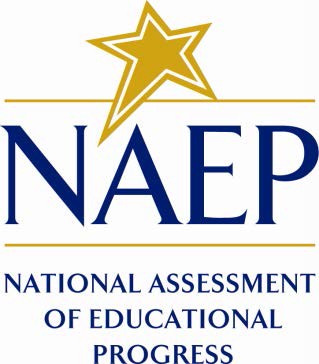
November 2018
No changes since v.12
Table of Contents
Learn about Your Role on the High School Transcript Study 6
Welcome to the High School Transcript Study! Please Register 7
Complete the School Information Form 9
Submit Student Transcripts Electronic Version 10
Submit Student Transcripts Hardcopy Version 12
Review Parent Information Letter 13
Review Parent Consent Letter 14
Learn about Your Role on the High School Transcript Study 15
NAEP in Your School – HSTS brochure 15
Decision Guide for Submitting Student Transcripts 21
HSTS FERPA Disclosure Record Annotation Text 23
Welcome to the High School Transcript Study! Please Register 24
Complete the School Information Form 31
Decision Guide for Submitting Student Transcripts 31
HSTS_School information Form 31
Submit Student Transcripts Electronic Version 39
HSTS Guidelines for Electronic Transcripts 39
Review Parent Information Letter 51
HSTS FERPA Disclosure Record Annotation Text 51
HSTS Parent Information Letter 51
Review Parent Consent Letter 52
HSTS FERPA Disclosure Record Annotation Text 52
HSTS Parent Information Letter 52
Description of the HSTS Website: The NAEP State and TUDA Coordinators or school HSTS coordinators, depending on how tasks are designated, are responsible for providing information and materials for the study, including course catalogs and student transcripts, using the HSTS website, which is an online secure file-sharing site. The HSTS website serves as the primary resource and action center throughout the data collection period and is provided in this document.
Notes on the organization of Appendix J3
Red text indicates descriptive notes and references to Appendices other than J3
Green text indicates text from hyperlinks or references within this document.
The Resources section of this document (beginning on page 17) contains the text of hyperlinks
HSTS Website Login Screen
Welcome to the High School Transcript Study
Username:
Password:
Request a password change
NAEP Secure Transfer System
According to the Paperwork Reduction Act of 1995, no persons are required to respond to a collection of information unless it displays a valid OMB control number. The valid OMB control number for this voluntary information collection is 1850-0928. The time required to complete this information collection is estimated to average 3 hours for schools that submit paper based transcripts or 3.5 hours for schools that submit electronic transcripts. If you have any comments concerning the accuracy of the time estimate, suggestions for improving this collection, or any comments or concerns regarding the status of your individual submission, please write to: National Assessment of Educational Progress (NAEP), National Center for Education Statistics (NCES), Potomac Center Plaza, 550 12th St., SW, 4th floor, Washington, DC 20202.
OMB No.1850-0928 APPROVAL EXPIRES 09/30/2021
National Center for Education Statistics (NCES) is authorized to conduct NAEP by the National Assessment of Educational Progress Authorization Act (20 U.S.C. §9622) and to collect students' education records from education agencies or institutions for the purposes of evaluating federally supported education programs under the Family Educational Rights and Privacy Act (FERPA, 34 CFR §§ 99.31(a)(3)(iii) and 99.35). All of the information you provide may be used only for statistical purposes and may not be disclosed, or used, in identifiable form for any other purpose except as required by law (20 U.S.C. §9573 and 6 U.S.C. §151).
By law, every NCES employee as well as every NCES agent, such as contractors and NAEP coordinators, has taken an oath and is subject to a jail term of up to 5 years, a fine of $250,000, or both if he or she willfully discloses ANY identifiable information about students. Electronic submission of each student’s information will be monitored for viruses, malware, and other threats by Federal employees and contractors in accordance with the Cybersecurity Enhancement Act of 2015. The collected information will be combined across respondents to produce statistical reports.
Notice: You are accessing a U.S. Government information system.
This warning banner provides privacy and security notices consistent with applicable federal laws, directives, and other federal guidance for accessing this Government system, which includes all devices/storage media attached to this system. This system is provided for Government-authorized use only. Unauthorized or improper use of this system is prohibited and may result in disciplinary action and/or civil and criminal penalties.
Sign On
Help
Screenshot
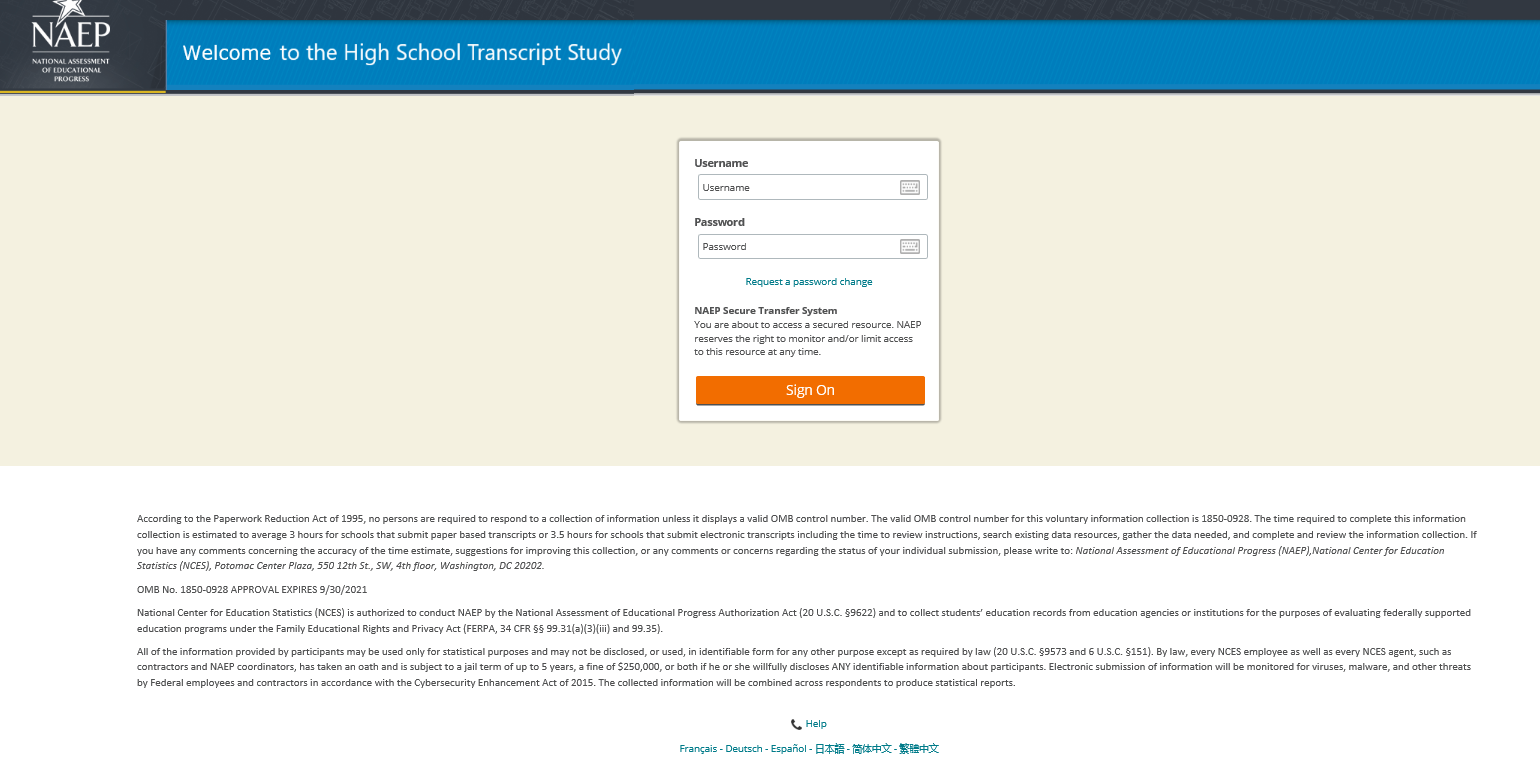
Home page
Welcome to the NAEP High School Transcript Study.
Your current activities for this study are listed below. Click on an activity to see specific instructions and resources.
Upload
My Activities
The following content is always available on the Home page.
Learn about Your Role on the High School Transcript Study
The following content is available the first time a school-level user accesses the site, prior to completing the registration process.
Welcome to the High School Transcript Study! Please Register
The following content is available to school-level users once the registration process is complete. The user will only see items which that user has been designated to complete. For example, if the state is submitting course catalogs, a school-level user will not see that activity listed.
Submit Course Catalogs
Complete the School Information Form
The following content is available to school-level users beginning in mid-April, for schools that are designated as the student transcript submitters.
Submit Student Transcripts
The following content is available only to school-level users who request either a parent information letter or a parent consent letter template.
Review Parent Information Letter
Review Parent Consent Letter
Screenshot
Because the list of activities that appears on the Home page is dynamic and depends on which tasks the school is designated to complete, as well as when the site is accessed, the screen shot below is example of how the Home page looks under the following conditions:
Registration is completed
October 2018 – mid April 2019
School is designated to submit catalogs and complete the School Information Form
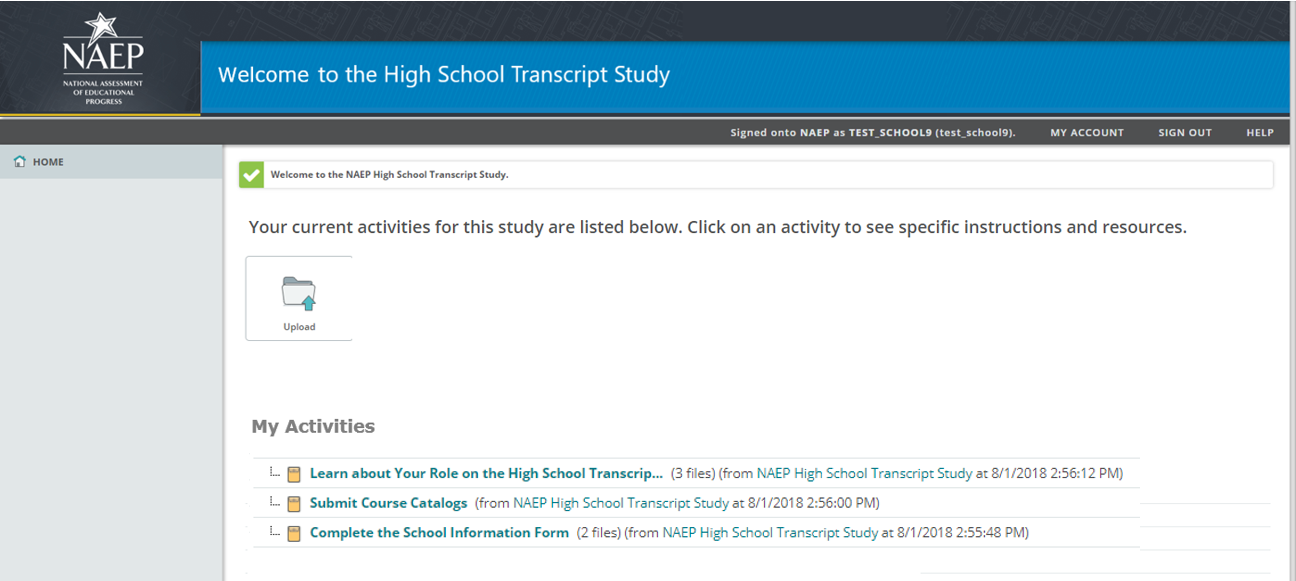
Learn about Your Role on the High School Transcript Study
Learn about Your Role on the High School Transcript Study
Thank you for participating in the 2019 NAEP High School Transcript Study (HSTS)! HSTS is a national study that examines coursetaking patterns of students and relates those patterns to educational achievement and NAEP assessment data.
To get started with your work on HSTS, you will find it helpful to review the resources listed below. The resources provide information regarding the study, your important role on the study, and how to use this website to complete study tasks. These resources include:
NAEP in Your School - HSTS: This brochure provides an overview of the purpose and key features of the NAEP High School Transcript Study, along with a schedule of the activities you will be completing.
HSTS Website Tutorial: This short tutorial video demonstrates the features of the HSTS website that you will be using to complete your activities.
Decision Guide for Submitting Student Transcripts: This document outlines the two methods for submitting student transcripts (electronic and paper). It is recommended that you review this information before choosing a submission method.
HSTS FERPA Disclosure Record Annotation Text: To be appended to the student record of students sampled for the study.
For more information, you may also visit the High School Transcript Study website at: http://nces.ed.gov/nationsreportcard/hsts. (http://nces.ed.gov/nationsreportcard/hsts)
Resources:
NAEP in Your School – HSTS (see Resources section of this document)
Download
HSTS Website Tutorial (see Resources section of this document for the video script)
Download
Decision Guide for Submitting Student Transcripts (see Resources section of this document)
Download
HSTS FERPA Disclosure Record Annotation Text (see Resources section of this document)
Download
Screenshot
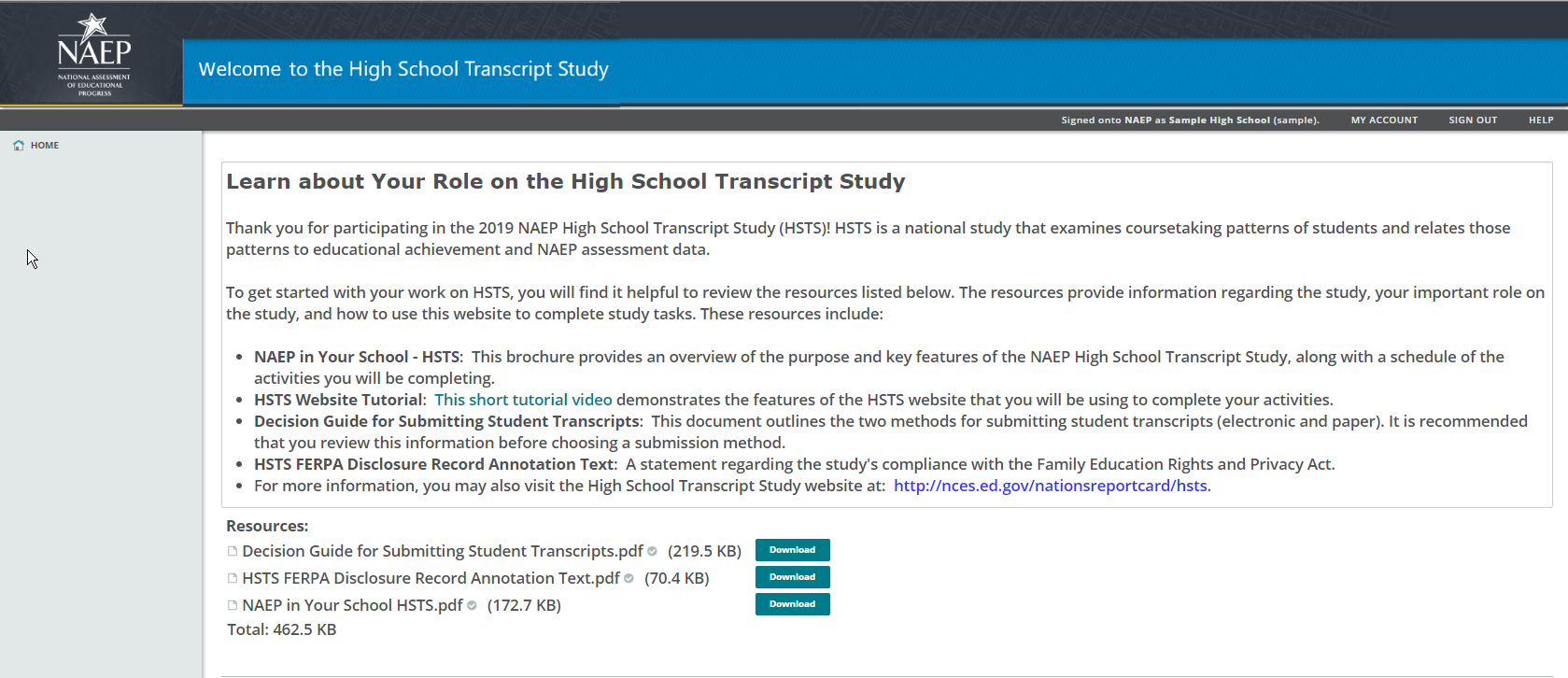
Welcome to the High School Transcript Study! Please Register
Welcome to the High School Transcript Study! Please Register
Registration
Thank you for creating your account! Access this quick survey to complete your registration: Registration URL (Each user receives a custom URL to the registration survey, hosted outside of the HSTS website. See Resources section of this document for the survey text)
Enter your name, phone number, and email address.
Read and accept the HSTS confidentiality agreement.
You will receive an email confirmation within 24 hours detailing next steps.
Screenshot
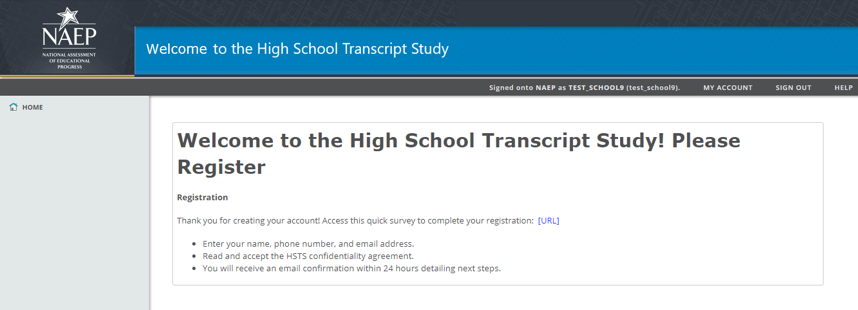
Submit Course Catalogs
Submit Course Catalogs
The NAEP High School Transcript Study will use your school's course catalogs from the last four school years in order to obtain information about the courses that will appear on student transcripts. As part of this activity you will be asked to complete a short survey and to provide course catalogs for the last four school years.
First Step: Provide Information about the Course Catalogs
To begin this activity, complete a survey pertaining to your course catalogs. (Each user receives a custom URL to the course catalog survey, hosted outside of the HSTS website. See Resources section of this document for the survey text)
Final Steps
Your final steps depend on the method you have chosen to submit your course catalogs.
If you have entered a web link to your course catalogs in the survey above, you are done with this activity.
If you have indicated you will upload electronic catalogs or mail hardcopy catalogs, review the applicable instructions below.
Instructions for Uploading Electronic Catalogs
If you are uploading more than one file, include the years of the catalog in the file names. Upload your course catalogs using the Upload button located near the top of this webpage.
Select the Upload button.
In the pop-up window that appears, either
drag and drop your file(s) into the large box in the center, or
select the Browse... link, locate the file(s) you will upload (use the Ctrl key on your keyboard to select multiple files), and select Open.
Select Upload.
Instructions for Mailing Hardcopy Catalogs
Because you have indicated in the catalog survey above that you will be mailing hardcopy versions of your course catalogs, you will receive a FedEx label in the mail. To complete this activity, simply use the FedEx label to mail in your course catalogs.
Screenshot

Complete the School Information Form
Complete the School Information Form
The NAEP High School Transcript Study is collecting supplemental information regarding course credits, graduation requirements, and other topics to aid in the analysis of student transcript data.
Please complete the School Information Form to provide this information for your school. (Each user receives a custom URL to the School Information Form survey, hosted outside of the HSTS website.)
You may use the resources below to help you complete the survey:
Decision Guide for Submitting Student Transcripts: This document outlines the two methods for submitting student transcripts (electronic and paper). It is recommended that you review this information before choosing a submission method.
A PDF version of the survey is available in the resource section below for your reference.
Resources
Decision Guide for Submitting Student Transcripts (see Resources section of this document)
Download
HSTS School Information Form (see Resources section of this document)
Download
Screenshot
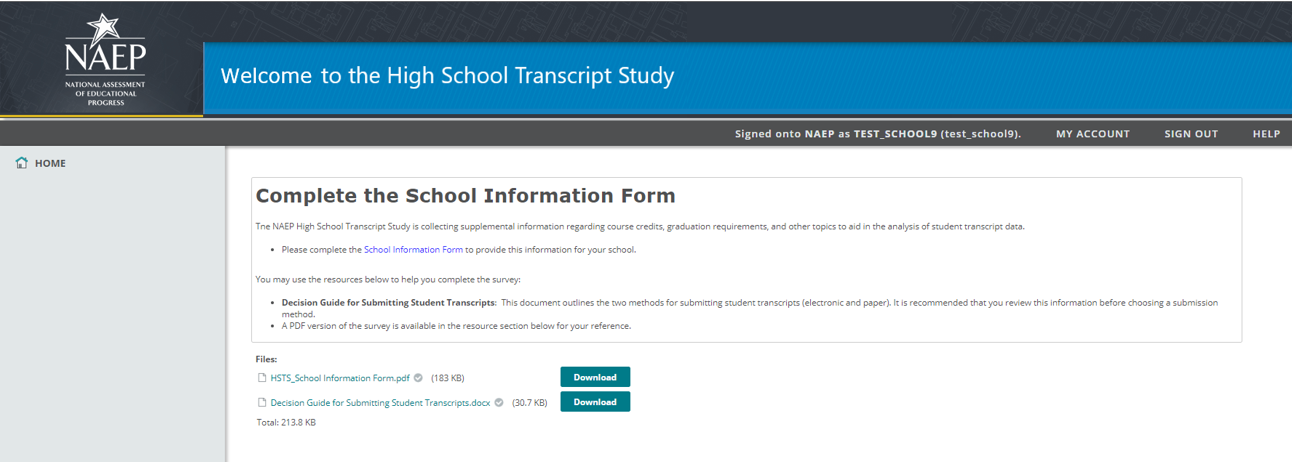
Submit Student Transcripts Electronic Version
Note: There are two versions of this activity, depending on whether the school has chosen, within the School Information Form, to submit electronic or hardcopy transcripts. The content available for schools submitting electronically is shown below, and the content for hardcopy submission follows immediately afterward.
Submit Student Transcripts
The final phase of the NAEP High School Transcript Study involves collecting transcript information for students taking the grade 12 NAEP mathematics and science assessment. You will be reimbursed for each transcript you submit.
Step 1: Review Student List
A list of students is provided in the resources section below. Use this list to ensure you are submitting transcripts for the correct students. Additionally, the Student List may be used as a template for preparing the transcript data file(s), as it contains column headings for each type of data to be collected.
Step 2: Review Guidelines for Electronic Transcripts
The instructions for this activity —HSTS Guidelines for Electronic Transcripts — are included in the resources section. These instructions provide information about the file formats that HSTS can support and how to prepare files for upload.
Step 3: Upload Student Transcript Files
To complete this activity, upload your student transcript file(s) using the Upload button located near the top of this webpage.
Select the Upload button.
In the pop-up window that appears, either
drag and drop your file(s) into the large box in the center, or
select the Browse... link, locate the file(s) you will upload (use the Ctrl key on your keyboard to select multiple files), and select Open.
Select Upload.
Resources
Student List (Each school will receive a list of students in their school for whom transcripts are needed.)
Download
HSTS Guidelines for Electronic Transcripts (see Resources section of this document)
Download
Screenshot
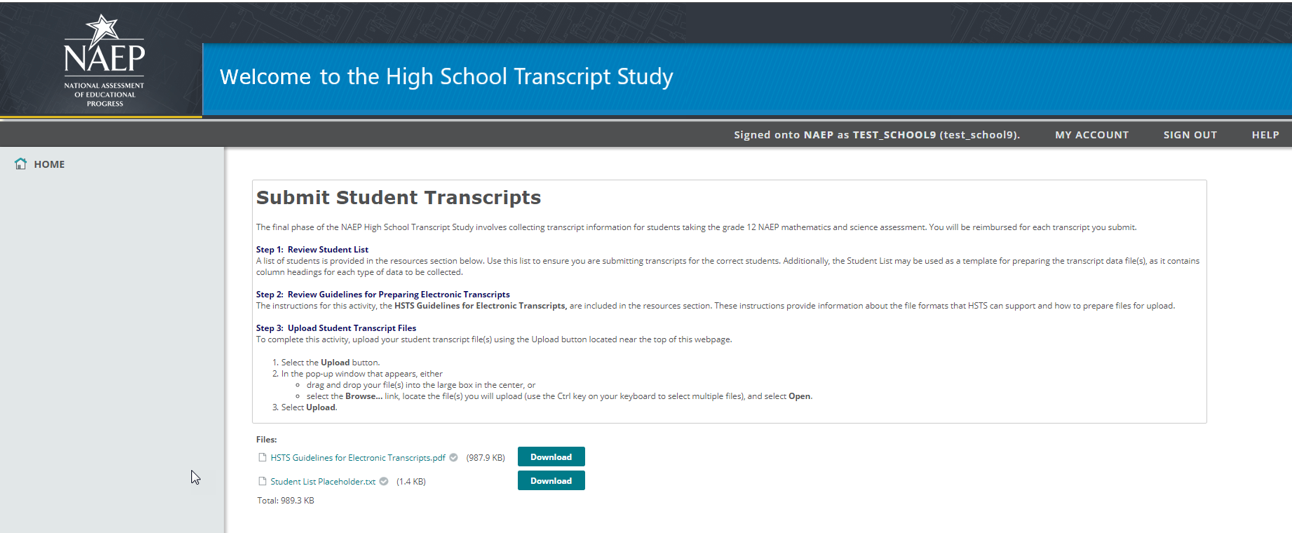
Submit Student Transcripts Hardcopy Version
Note: There are two versions of this activity, depending on whether the school has chosen, within the School Information Form, to submit electronic or hardcopy transcripts. The content available for schools submitting hardcopy transcripts is shown below.
Submit Student Transcripts
The final phase of the NAEP High School Transcript Study involves collecting transcripts for students taking the grade 12 NAEP mathematics and science assessment. You will be reimbursed for each transcript you submit.
Because you have indicated that you will be submitting hardcopy versions of your student transcripts, a NAEP Supervisor will contact you and make an appointment to visit your school to collect the student transcripts.
How to Prepare for the School Visit
We request that you have following items available for the NAEP Supervisor’s visit to your school:
Copies of the student transcripts for each student in the sample. A Student List is available in the resources section below. Use this list to ensure you are submitting transcripts for the correct students.
An additional copy of a student transcript that the Supervisor can label and use as a sample, or "key," to help locate the information that is being collected.
During the school visit, the NAEP Supervisor will collect the copies of the student transcripts, use the additional transcript copy to create a labeled sample with your help, and mask student identifying information on all documents before leaving the school.
Resources
Student List (Each school will receive a list of students in their school for whom transcripts are needed.)
Download
Screenshot
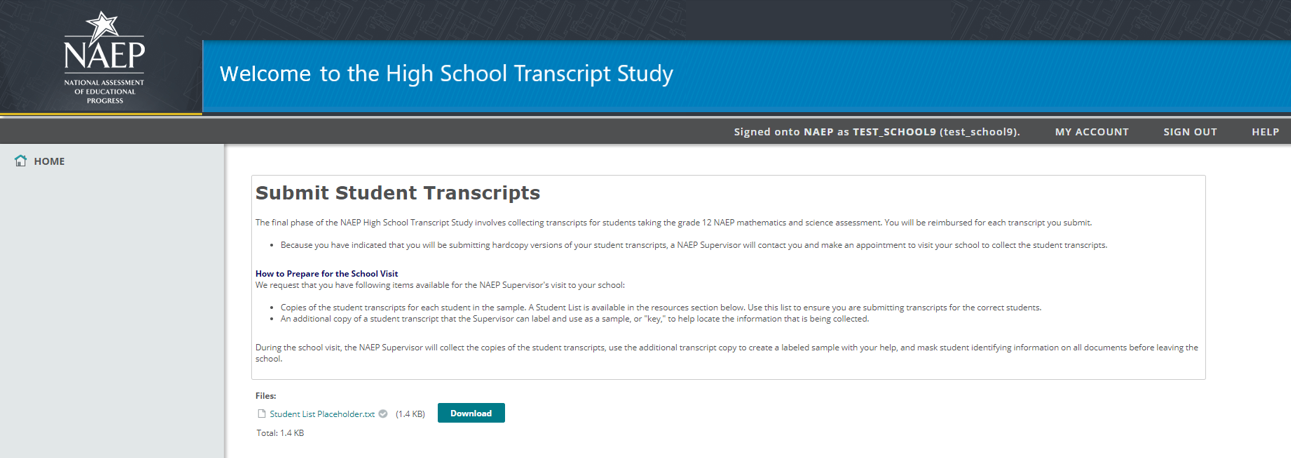
Review Parent Information Letter
Note: This page is only available to schools who have requested within the School Information Form to receive a Parent Information Letter template.
Review Parent Information letter
Our normal procedure for the transcript study is to provide text that can be used to annotation sample student’s record to assist schools and districts in complying with FERPA’s recordkeeping requirements of 34 CFR § 99.32, without the need to directly notify parents of the disclosure (no student time is involved in the transcript study and student direct identifiers are redacted from the transcripts). If your school uses a different procedure, the following resources are available as references or to distribute to parents of sampled students as you see fit:
HSTS FERPA Disclosure Record Annotation Text - to be appended to the student record of students sampled for the study.
HSTS Parent Information Letter - a letter notifying parents of their child's participation in HSTS.
Resources
HSTS FERPA Disclosure Record Annotation Text (see Resources section of this document)
HSTS Parent Information Letter (see Resources section of this document)
Screenshot

Review Parent Consent Letter
Note: This page is only available to schools who have directly requested to receive a Parent Consent Letter template. The Parent Consent Letter is not presented as an option in the School Information Form – schools are only able to request a Parent Information Letter. However, the Parent Consent Letter will be provided if specially requested by the school. Because the distribution of consent letters reduces participation, the goal of this procedure is to limit the availability of the Parent Consent Letter to situations where it is required.
Review Parent Consent Letter
Our normal procedure for the transcript study is to provide text that can be used to annotation sample student’s record to assist schools and districts in complying with FERPA’s recordkeeping requirements of 34 CFR § 99.32, without the need to directly notify parents of the disclosure (no student time is involved in the transcript study and student direct identifiers are redacted from the transcripts). If your school uses a different procedure, the following resources are available as references or to distribute to parents of sampled students as you see fit:
HSTS FERPA Disclosure Record Annotation Text - to be appended to the student record of students sampled for the study.
HSTS Parent Information Letter - a letter notifying parents of their child's participation in HSTS.
HSTS Parent Consent Letter - a letter notifying parents of their child's participation in HSTS, with an option for parents not to let their child participate.
Resources
HSTS FERPA Disclosure Record Annotation Text (see Resources section of this document)
HSTS Parent Information Letter (see Resources section of this document)
HSTS Parent Consent Letter (see Resources section of this document)
Screenshot
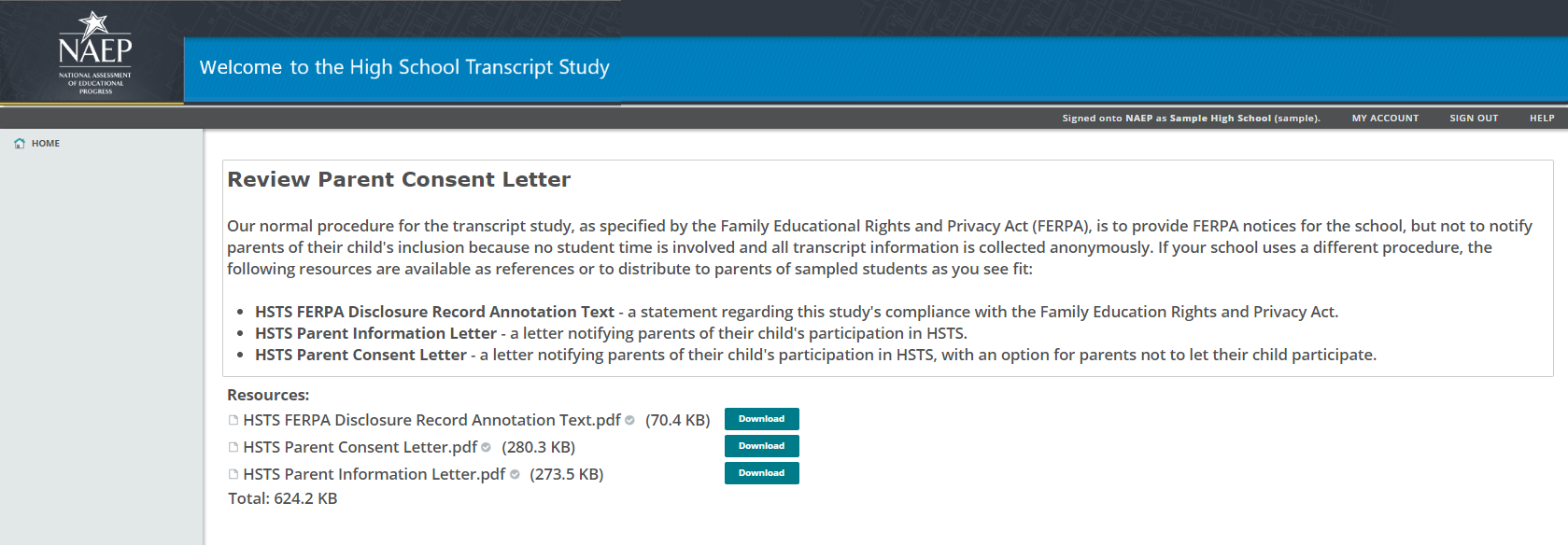
Note: The following content is the text that displays after clicking on the hyperlinks listed in the preceding pages of this document
Resources
Learn about Your Role on the High School Transcript Study
NAEP in Your School – HSTS brochure
NAEP in Your School - HSTS
NAEP 2019 in Your School
High School Transcript Study
Page One Sidebar
NAEP is an integral part of education in the United States.
The National Assessment of Educational Progress (NAEP) is the largest continuing and nationally representative assessment of what our nation’s students know and can do in a variety of academic subjects. NAEP is a congressionally mandated project administered by the National Center for Education Statistics (NCES) within the U.S. Department of Education.
In addition to the assessments, NAEP coordinates a number of related special studies. Such studies often involve special data collection procedures in the field, in-depth analyses of NAEP results, and evaluations of various technical procedures.
The NAEP High School Transcript Study (HSTS), conducted by NCES, is a periodic survey of transcripts of high school graduates and the relationship between coursetaking patterns and student achievement.
Page One Body
The NAEP HSTS is designed to provide information about the types of courses that graduates take during high school, how many credits they earn, and their grade point averages. In addition, this study provides an opportunity to examine the relationship between coursetaking patterns and educational achievement through the link to NAEP proficiency data. The HSTS 2019 school sample includes public and private schools.
What Is the Schedule of Activities for HSTS 2019?
Preliminary Activities (September 2018–March 2019)
Schools will be notified of their selection for HSTS and asked to identify an HSTS school coordinator.
Course catalogs or course lists will be requested for the current school year (2018–2019) and for the preceding three years (2017–2018, 2016–2017, and 2015–2016).
Schools will be asked to complete a School Information Form that asks about credits awarded for courses, grading policies, and graduation requirements, as well as transcript content information and transcript submission.
A sample student transcript, with the student name redacted, will be requested at the school, district, or state level.
Schools will be instructed to place the Family Educational Rights and Privacy Act (FERPA) disclosure annotation in the record of each student selected to take part in the NAEP 2019 transcript study, in order for the school to comply with FERPA’s recordkeeping requirements of 34 CFR § 99.32. The supplied student record annotation text will include the provisions under which the transcript information was disclosed (34 CFR 99.31(a)(3)(iii) and 99.35), the name and purpose of the study, and the name of the agency/contractor who collected the information.
Transcript Collection (June–October 2019)
NAEP will collect copies of transcripts for the sampled students. The state or district will provide transcripts directly to NAEP, or a study representative will contact the HSTS coordinator about collecting the transcripts. If the transcripts can be transmitted electronically, information will be given to the HSTS school coordinator about the information the transcripts must include and directions on how to transmit the transcripts. If the transcripts cannot be transmitted electronically, a NAEP representative will return to the school to collect copies of the requested student transcripts.
What Else Should You Know?
No student or teacher time is involved. NAEP staff will work with school personnel to minimize burden as much as possible.
Confidentiality is a top priority. Students’ names and identifying information will be removed or masked before copies of transcripts are processed.*
There is no cost to schools. NCES will pay the school’s usual charge for providing transcripts.
Parental notification is not required. Participating schools may choose whether or not to notify parents about this study.
Page Two
What Have We Learned From the HSTS?
The HSTS was first conducted in 1987 and then in 1990, 1994, 1998, 2000, 2005, and 2009. The graph below highlights the course curriculum levels graduates have completed since 1990, based on the three HSTS curriculum levels: standard, midlevel, and rigorous. Over time, students have taken more challenging courses.
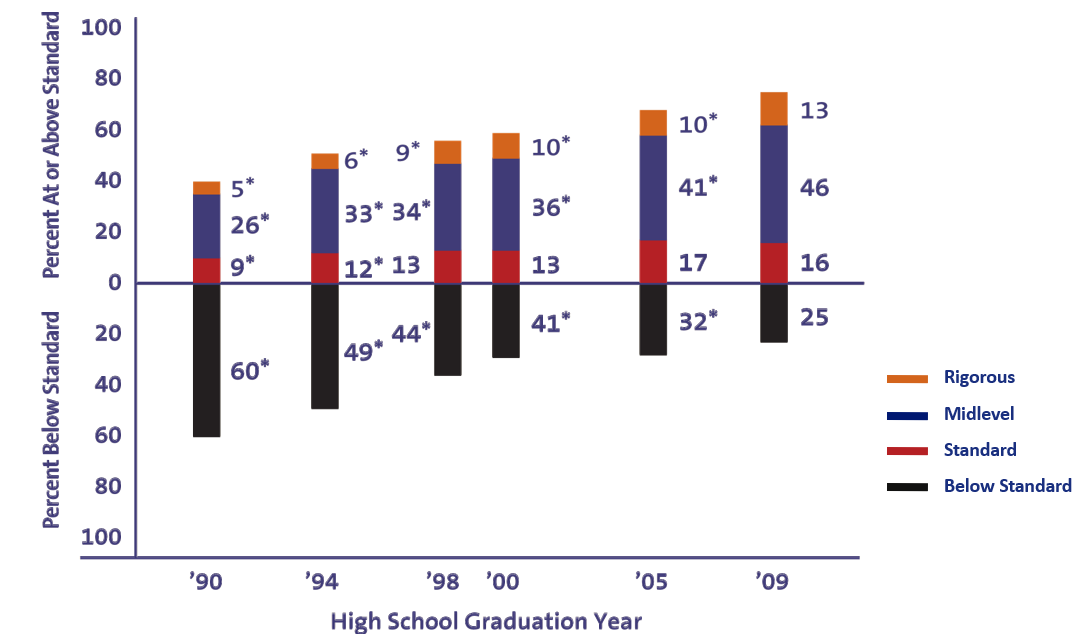
Significantly different (p<.05) from 2009.
NOTE: Details may not sum to total because of rounding. Curriculum levels are based on the number of credits earned (where one credit equals a year-long course) and types of courses students complete. The standard curriculum is defined as completing at least four credits of English and three credits each in mathematics, science, and social studies. The midlevel curriculum builds upon the standard curriculum by adding an algebra and geometry requirement, credits in two laboratory sciences (biology, chemistry, or physics), and a credit in foreign languages. The rigorous curriculum level builds upon the midlevel curriculum by adding a fourth credit in mathematics of precalculus or calculus, credits in all three laboratory sciences, and three credits in foreign languages.
SOURCE: U.S. Department of Education, Institute of Education Sciences, National Center for Education Statistics, High School Transcript Study (HSTS), various years, 1990–2009
Where Can I Find More Information?
More information about the NAEP high school transcript studies can be found on the NAEP website at http://nces.ed.gov/nationsreportcard/hsts.
* NCES is authorized to conduct NAEP by the National Assessment of Educational Progress Authorization Act (20 U.S.C. §9622). Educational agencies and institutions are permitted to disclose personally identifiable information from students' education records to NCES by the Family Educational Rights and Privacy Act (FERPA, 34 CFR §§ 99.31(a)(3)(iii) and 99.35) for the purpose of evaluating federal supported education programs.
All of the information provided by study participants may be used only for statistical purposes and may not be disclosed, or used, in identifiable form for any other purpose except as required by law (20 U.S.C. §9573 and 6 U.S.C. §151). By law, every NCES employee as well as every NCES agent, such as contractors and NAEP coordinators, has taken an oath and is subject to a jail term of up to 5 years, a fine of $250,000, or both if he or she willfully discloses ANY identifiable information about students. Electronic submission of each student’s information will be monitored for viruses, malware, and other threats by Federal employees and contractors in accordance with the Cybersecurity Enhancement Act of 2015. The collected information will be combined across respondents to produce statistical reports.
Page Two Footer
Find us on: [social media icons]
This publication was prepared for the National Assessment of Educational Progress by Hager Sharp under contract ED-IES-13-C-0025 to the National Center for Education Statistics, U.S. Department of Education.
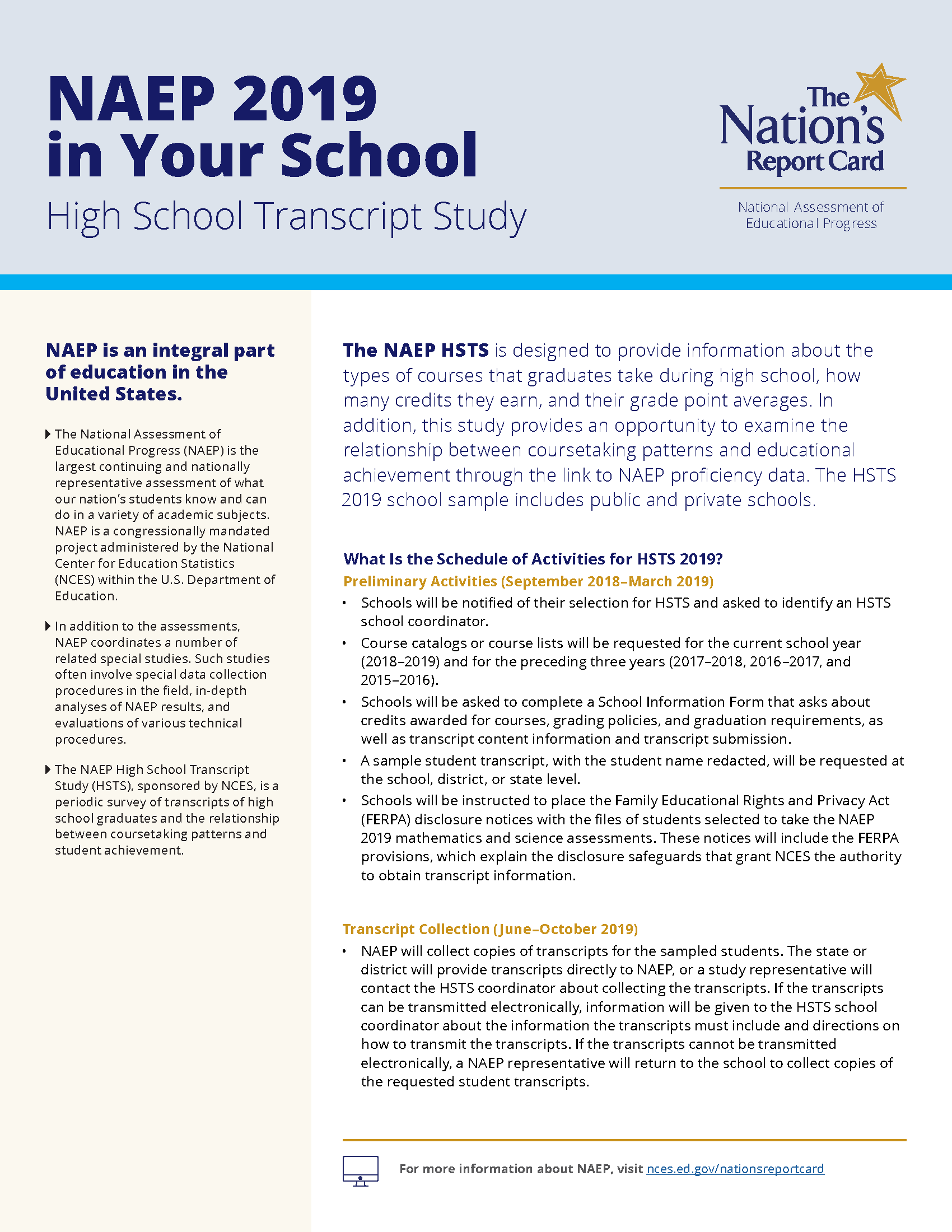
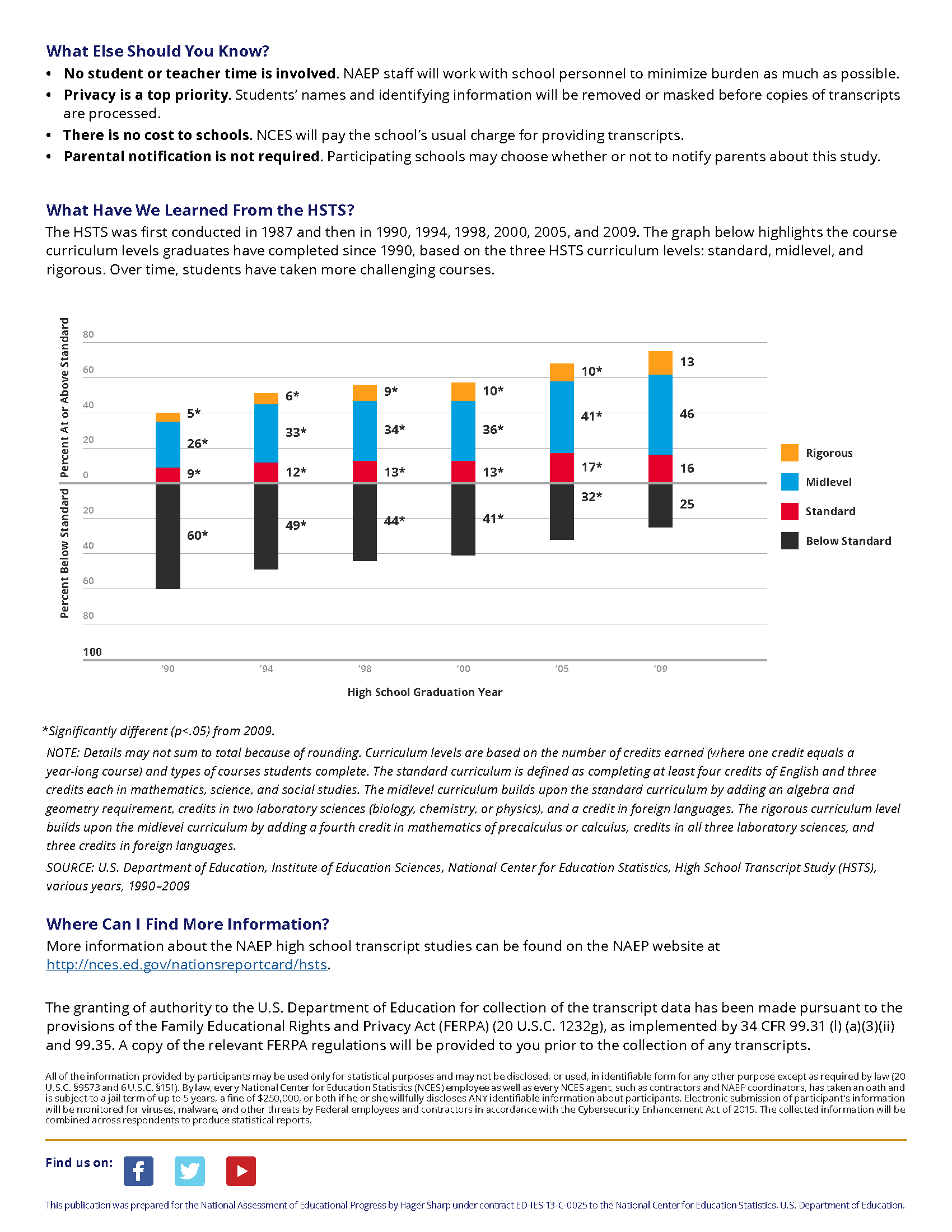
HSTS Website Tutorial
The tutorial video is under production. The video script is as follows.
Section |
Narration |
Intro |
Thank you for participating in the NAEP High School Transcript Study.
This short video tutorial will show you how to use the HSTS website to complete your activities for this study. |
Home screen |
This is the Home screen that you see when you log into the HSTS website. The Home screen lists the activities that are available for you to complete. This list can change as new activities become available. |
Activity Component: Instructions |
Each activity contains a brief description and instructions for completing the activity. |
Activity Component: Survey Links |
Some activities involve a survey. Click on the survey link and the survey will open in your web browser. |
Activity Component: Downloading Files |
Some activities have supplemental documents included as resources for completing the activity. The resources are listed below the activity description.
To view a resource document, select the Download button next to the document name. |
Activity Component: Uploading Files |
If you have elected to submit materials electronically, you will need to upload the files.
To upload one or more files, select the Upload button. You may either drag and drop your files into the Upload window, or you can select the Browse… link to select the files you want to upload.
When your files are listed in the Upload window, select the Upload button. A file will display with a green check mark when it has been successfully uploaded. |
Activity Summary |
To summarize, there are three things you may need to do on the HSTS website to complete your activities:
|
Change Password |
There are a couple of additional tools available to you on the HSTS website. These are located in the horizontal blue menu near the top of all screens on the HSTS website.
First, the “My Account” tool allows you to change your password.
Enter your current password into the box. Then you can select to either use the suggested password, or type a custom password of your choosing. Finally, select the Change Password button. |
Help |
Second, the Help tool displays contact information for the HSTS help desk. The HSTS help desk will assist you if you have questions about completing your activities or if you are experiencing technical difficulties. |
Outro |
Thank you once again for your help with this important study. |
Decision Guide for Submitting Student Transcripts
This document provides an overview of electronic and hardcopy transcript submission. It is intended to help schools decide which submission method is best for them.
Decision Guide for Submitting Student Transcripts
The information in this guide will help you make the best choice for your school regarding whether to submit electronic or paper student transcripts.
Step 1: Consider the Transcript Format
The method that is easiest for you may depend on the format in which you maintain your transcript records.
For electronic submission, you must have transcript files in one of the following formats:
Preferred: Microsoft Excel or comma-separated-value (CSV)
Accepted: Exensible Markup Language (XML), Microsoft Word, Microsoft Access, formatted text (TXT), PDF, SPSS, SAS
For paper submission, you must have hardcopy transcript files available for each student taking the grade 12 NAEP mathematics and science assessments.
Step 2: Consider the Time and Work Involved
The following table compares the major tasks involved with each submission method.
Column 1
Electronic Submission
Download a list of participating students and pull transcript records for the selected students
Review transcript files to ensure all required fields* are included. Add required fields as necessary
Review transcript files to ensure personal identifying information is deleted
Upload transcript files on the HSTS website
Column 2
Electronic Submission
Download a list of participating students and collect hardcopy transcripts for each selected student
Meet with a NAEP Supervisor for at least 2 hours on a scheduled date after transcripts are available
Provide a space for the NAEP Supervisor to process transcripts and mask personal identifying information
Footnote
* Required fields for HSTS transcript files are: NAEP Admin ID, Course ID, Course Title, Grade Level, School Year, Course Term, Credits Earned, Grade Earned, Transfer Course (Y/N indicator)
Document layout
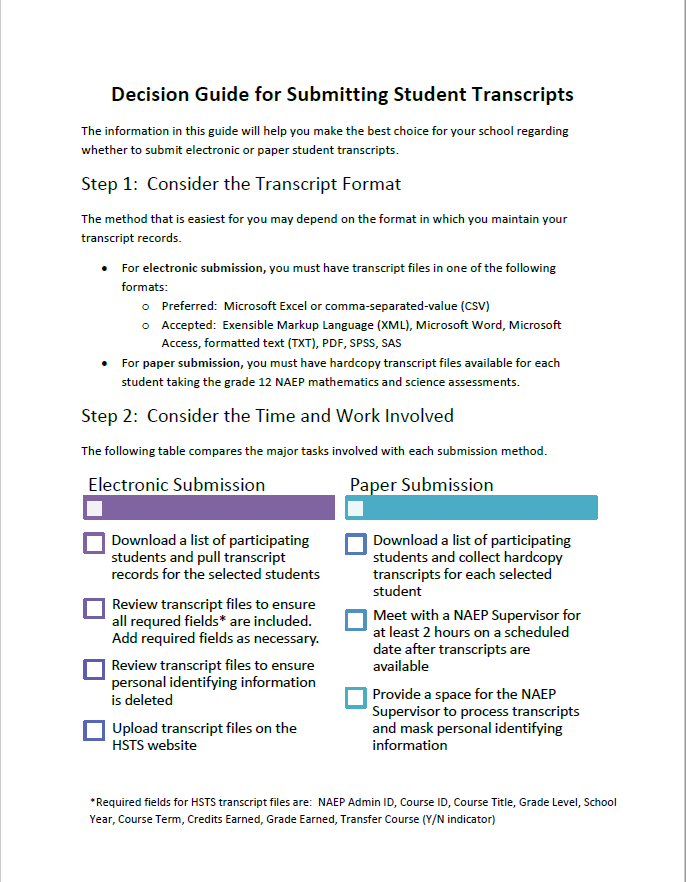
HSTS FERPA Disclosure Record Annotation Text
2019 High School Transcript Study
“A copy of this student’s transcript____ will be ____ has been provided to WESTAT, agent for the U.S. Department of Education, National Center for Education Statistics (NCES) under the Family Education Rights and Privacy Act (FERPA, 20 U.S.C. 1232g) as implemented under 34 CFR 99.31(a)(3)(iii) and 99.35. The High School Transcript Study (HSTS), conducted by NCES, collects information on current course offerings and course taking in the nation’s secondary schools. This student has been selected to participate in HSTS, and data from these records will be combined with others into statistical summaries and tables. All of the provided information may be used only for statistical purposes and may not be disclosed, or used, in identifiable form for any other purpose except as required by law (20 U.S.C. §9573 and 6 U.S.C. §151).”
---------------------------------------------
Welcome to the High School Transcript Study! Please Register
Registration Survey
[survey URL]
1. [School Name]
Is this the name of your high school?
Yes
No
The text below is only displayed if the user answers “No” to the question above.
Let's make sure you register for the correct school.
1. You may need to access a new survey link, since the name of your school is incorrect.
2. Contact the NAEP help desk: 1-800-283-6237 or [email protected]. (Link to compose email with [email protected] as the addressee.)
The text below is only displayed if the user answers “Yes” to the first question.
2. Enter your contact information below.
First Name: ____________________
Last Name: ____________________
Work Email Address: ____________
Work Phone Number: ____________
3. Review the following confidentiality agreement, and select between the options below.
I accept this agreement.
I do not accept this agreement, and will tell the school principal to select a new HSTS coordinator.
HSTS Confidentiality Agreement
Under this agreement you will have access to BLANK, a secure site maintained by Westat on behalf of the National Center for Education Statistics (NCES). By accepting this agreement, you also agree to keep information from the site confidential as outlined below.
This data request for NAEP fully conforms to the requirements of the Family Educational Rights and Privacy Act of 1974 (FERPA) [20 U.S.C. 1232g; 34 CFR Part 99]. FERPA protects the privacy of students’ education records, by conditioning the disclosure of personally identifiable information from students’ education records without consent. For the purposes of this data collection, educational agencies and institution are permitted to disclose personally identifiable information from students' education records to NCES, as an authorized representative of the Secretary of Education, by FERPA under 34 CFR §§ 99.31(a)(3)(iii) and 99.35 for the purpose of evaluating federal supported education programs.
NAEP complies with FERPA’s confidentiality requirements through its use of data transmittal, data storage, and personnel protocols designed to safeguard personally identifying information. Confidential information is protected during transmission to and from NAEP systems by the use of data encryption technologies, such as Secure Socket Layer (SSL) and digital certificates and signatures that encrypt data, validate data integrity, and authenticate the parties in a transaction. NAEP uses SSL for all restricted-access websites that are used to transfer confidential data, such as www.mynaep.com. All individuals including contractors and school personnel must sign assurances of confidentiality in which they pledge to maintain data confidentiality and exercise reasonable caution to prevent access by others to this information when it is in their possession.
All of the information provided by study participants may be used only for statistical purposes and may not be disclosed, or used, in identifiable form for any other purpose except as required by law (20 U.S.C. §9573 and 6 U.S.C. §151). By law, every NCES employee as well as every NCES agent, such as contractors and NAEP coordinators, has taken an oath and is subject to a jail term of up to 5 years, a fine of $250,000, or both if he or she willfully discloses ANY identifiable information about students. Electronic submission of each student’s information will be monitored for viruses, malware, and other threats by Federal employees and contractors in accordance with the Cybersecurity Enhancement Act of 2015. The collected information will be combined across respondents to produce statistical reports.
As a representative of your school working on NAEP, you will have access to personally identifying student information. By accepting this agreement, you are certifying that you are authorized to handle and process NAEP information on behalf of your school, and that you will keep the information secure and confidential.
Thank you! You are now officially registered.
Next steps:
1. You will receive a new package in your hsts.mynaep.com account within 24 hours.
2. Please keep an eye on your email - you will receive a message when the new package has been delivered to your account.
Screenshots
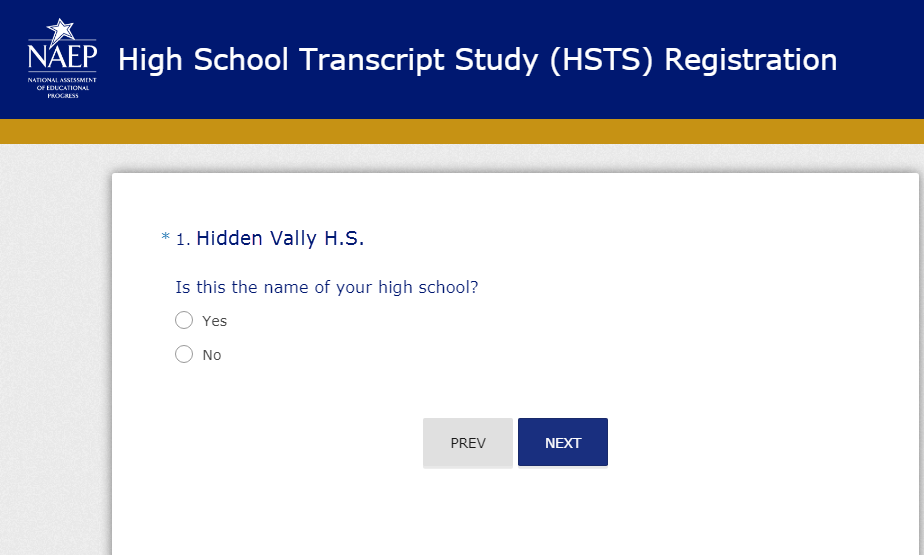
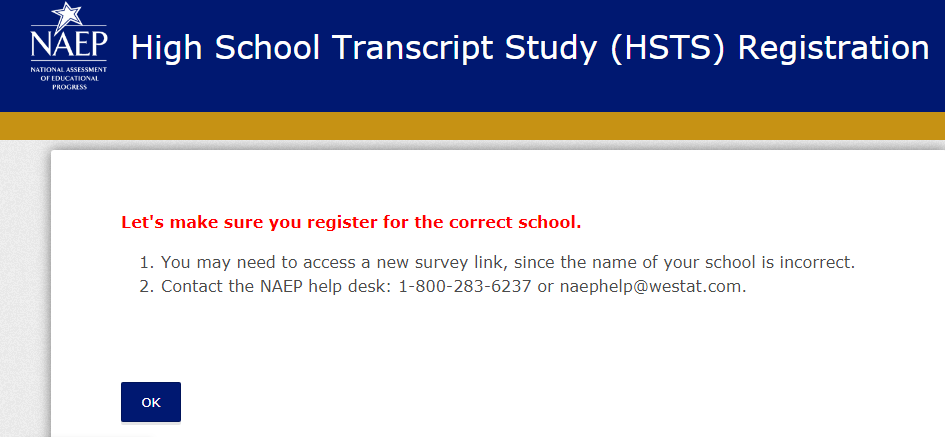
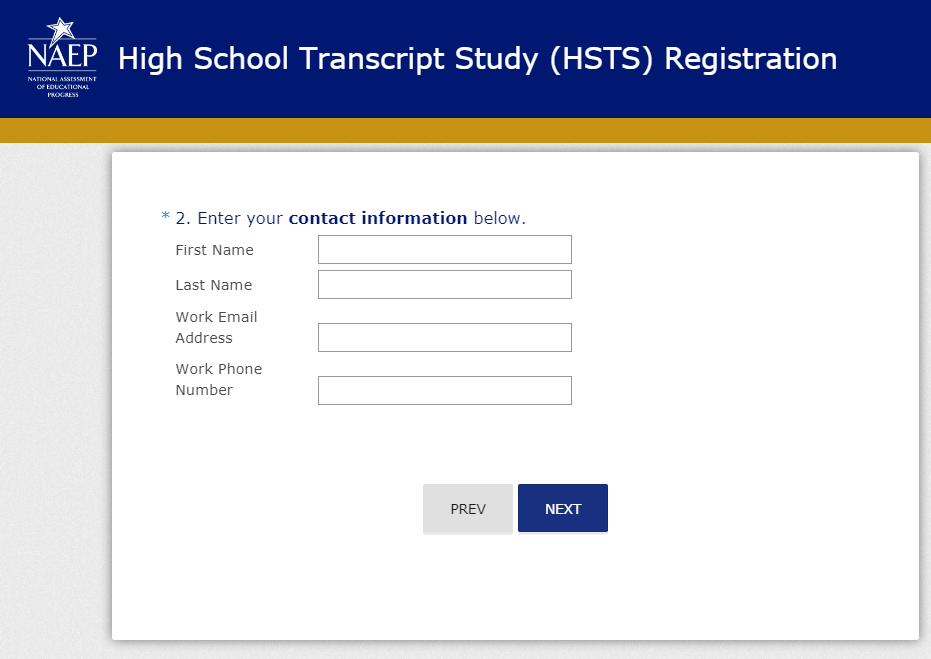
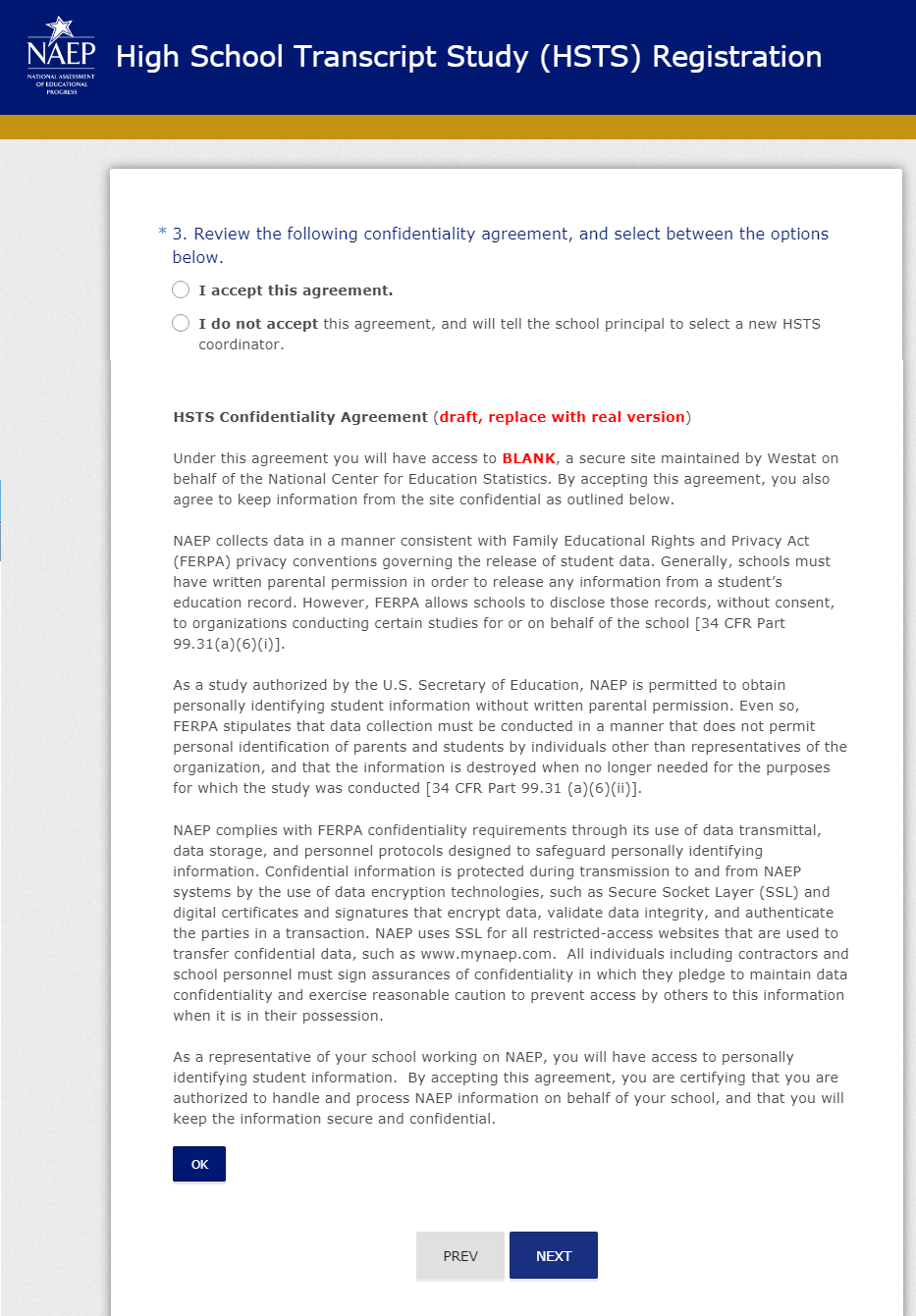

Submit Course Catalogs
Course Catalog Survey
HSTS Course Catalog Survey Schools
HSTS Course Catalog Survey
Thank you for your work supporting the 2019 NAEP High School Transcript Study (HSTS). The NAEP HSTS is conducted to provide education policymakers with information regarding current course offerings and course-taking patterns in secondary schools. This study also permits research to examine the relationship between course-taking patterns and education achievements.
This survey asks about the availability of catalogs or listings of courses that your high school offers. It focuses on the catalog or course listing for your high school’s 2018-2019 school year. Ideally, there would be a school-level catalog with course names and descriptions. If a school-level catalog is not available, then a district- or state-level catalog with course names and descriptions would work. School-, district-, or state-level course listings, which include course names but not course descriptions, would also suffice.
What is your school name?
______________________
Is a 20180-19 high school course catalog or listing available?
Yes
No – Please explain why there are no catalogs or course listings available
___________________________________________________________
What type of course catalog listing is it?
School-level catalog that provides course names and descriptions
District-level catalog that provides course names and descriptions
State-level catalog that provides course names and descriptions
School-level course listing without course descriptions
District-level course listing without course descriptions
Does the 2018-2019 high school catalog or course listing cover all courses offered to students in grades 9 through 12?
Yes
No
If the 2018-19 high school catalog or course listing does not cover all courses offered in grades 9 through 12, is there one or more catalogs or course listings available that include the missing courses?
Yes
No
Does the 2018-19 high school catalog(s) or course listing(s) contain the following information? Please check the box if it contains the specified information.
Course ID number
Grade level(s) course offered
Course term (i.e., year, semester, quarter)
Course level (i.e., regular, honors, remedial)
Credits earned for passing course
Special education course indicator
English language learner (ELL) course indicator
College-credit course indicator
Online course indicator
Is the 2018-19 high school catalog or course listing available publicly online, in an electronic version, or in a paper version? If there are multiple catalogs or course listings covering 2018-19 high school courses, please also indicate the formats of the additional catalogs if they differ from the main catalog or course listing.
Electronic version – If an electronic version exists, please use the secure MyNAEP for HSTS to transmit the electronic catalog or course listing.
Paper version – If only a paper version exists, FedEx mailing labels will be sent to the HSTS Coordinator at the school so that the catalog or course listing can be mailed.
Available publicly online – if available publicly online, please list the web address below:
______________________________________________________________________
Are catalog or course listings available for the three previous school years (2015-16, 2016-17, and 2017-18)?
No
Yes – Are they in the same formats as the 2018-19 catalog or course listing?
____________________________________________________________
Are the previous school years’ high school catalogs or course listings available publicly online, in an electronic version, or in a paper version?
Electronic version – If an electronic version exists, please use the secure MyNAEP for HSTS to transmit the electronic catalog or course listing.
Paper Version – If only a paper version exists, FedEx mailing labels will be sent to the HSTS Coordinator at the school so that the catalog or course listing can be mailed.
Available publicly online – If available publicly online, please list the web address below:
_______________________________________________________________________
Thank you again for taking the time to complete this course catalog survey. If you have any questions about this survey, please contact the HSTS Help Desk ([email protected]).
Complete the School Information Form
Decision Guide for Submitting Student Transcripts
(See Decision Guide for Submitting Student Transcripts section earlier in this document)
HSTS School Information Form
The following survey asks important questions about your high school’s policies concerning course credits, graduation requirements, and other subjects. It also asks questions about the transcripts that your school will submit for the students sampled in the 2019 NAEP Grade 12 assessments. Thank you in advance for the time and effort needed to answer these questions. Please complete the entire survey before Thursday, January 31, 2019.
Introduction
What is your school name?
_____________________________________________________________________
What is your state/school district name?
_____________________________________________________________________
A. School Information
This section primarily asks questions about credits awarded for high school courses and the requirements for graduating with a standard diploma. In responding to the questions in this section, think only about the graduating Class of 2019.
How many credits does a student earn for a year-long course; that is, a course taken for a single period over the 2018-19 school year or its block equivalent?
# of credits: _____________
Has this value changed during the last four school years?
□ Yes
□ No
How many credits were earned for a year-long course or its block equivalent for the following years?
2017-18 # of credits: _____________
2016-17 # of credits: _____________
2015-16 # of credits: _____________
Are there differences in the number of credits awarded for these courses?
Honors courses (including AP and IB)
□ Yes – Please explain the differences.
_______________________________________________________________
□ No
Special education courses
□ Yes – Please explain the differences.
_______________________________________________________________
□ No
English as a Second language courses
□ Yes – Please explain the differences.
_______________________________________________________________
□ No
How many hours of instruction does a student receive for a year-long course or its block equivalent? (Please report using whole numbers.)
# hours of instruction: _______________
What is the total number of credits a student must earn to graduate with a standard high school diploma from your school?
Total # of credits: _________________
What is the number of credits required for a standard diploma in your high school in the following subject areas? If the subject area is not required, please write NA on the credit line.
Note: The number of credits entered for parts ‘a” through ‘j’ should add up to the total number of credits that was entered for a student to graduate with a standard high school diploma.
English/Language Arts # of credits: _____________
Mathematics # of credits: _____________
Computer Science # of credits: _____________
Social Studies/History # of credits: _____________
Science # of credits: _____________
Foreign Language # of credits: _____________
Physical Education/Health # of credits: _____________
Other (specify: ______________) # of credits: _____________
Other (specify: ______________) # of credits: _____________
Other (specify: ______________) # of credits: _____________
Do credits earned prior to ninth grade count toward graduation?
□ No
□ Yes - please explain:
_____________________________________________________________________
_____________________________________________________________________
Are there any courses or activities required for graduation that do not receive credits?
□ No
□ Yes - please explain:
_____________________________________________________________________
_____________________________________________________________________
Must the student meet a minimum overall grade point average (GPA) to graduate with a standard diploma in your high school?
□ No
□ Yes - what is the minimum GPA? __________________
Are there state or district competency tests or performance assessments that are required for graduation with a standard high school diploma?
□ Yes
□ No
If Yes, what content areas (e.g., Reading, Citizenship, Mathematics) do the competency tests or performance assessments cover?
________________________________________________________________
________________________________________________________________
________________________________________________________________
If a student does not pass the tests or assessments, what is his/her graduation status?
________________________________________________________________
________________________________________________________________
________________________________________________________________
B. Transcript Information
This section asks questions about the information listed on the student transcripts, such as what course information is included, how courses are graded, and how to identify selected types of courses.
Is the following information listed on the student transcript for each course that students take? (Please check all that apply.)
Course name □
Grade level course was taken □
School year course was taken □
Course term (i.e., length of course) □
Grade earned in course □
Number of credits awarded for course □
Course level (i.e., Regular, Honors, AP, IB, Special Education) □
Course location (if not taught at school) □
Language of instruction (if not taught in English) □
Online course indicator □
Transfer course indicator □
Course ID number □
How are the following types of courses identified on the student transcripts? For example, course indicators may be located within the course ID number, added after the course ID number or course title, or stored as separate data fields in the course record.
Are the vocational courses identified in any special way?
□ No
□ Yes – please list what specific indicator to look for to identify the courses on the transcript.
__________________________________________________________________________
Are the remedial courses identified in any special way?
□ No
□ Yes – please list what specific indicator to look for to identify the courses on the transcript.
__________________________________________________________________________
Are the honors, AP, or IB courses identified in any special way?
□ No
□ Yes – please list what specific indicator to look for to identify the courses on the transcript.
__________________________________________________________________________
Are the dual or college credit courses identified in any special way?
□ No
□ Yes – please list what specific indicator to look for to identify the courses on the transcript.
__________________________________________________________________________
Are the special education courses identified in any special way?
□ No
□ Yes – please list what specific indicator to look for to identify the courses on the transcript.
__________________________________________________________________________
Are the courses taught off-campus identified in any special way?
□ No
□ Yes – please list what specific indicator to look for to identify the courses on the transcript.
__________________________________________________________________________
Are the online courses identified in any special way?
□ No
□ Yes – please list what specific indicator to look for to identify the courses on the transcript.
__________________________________________________________________________
Are the ESL or bilingual courses identified in any special way?
□ No
□ Yes – please list what specific indicator to look for to identify the courses on the transcript.
__________________________________________________________________________
What type of grading system is used at your high school? Mark all that apply.
□ Letter grades (A, B, C, …)
□ Numeric grades (63, 78, 100, …)
□ Proficiency levels (Exceed expectations, Meets expectations, …)
□ Pass/Fail
□ Satisfactory/Unsatisfactory
□ Other (please specify): ______________________________________________________
______________________________________________________
If you use a letter, numeric, or proficiency level grading system, what is the lowest possible grade a student can have to pass a course?
____________________________________________________________________
If you use a letter, pass/fail, or satisfactory/unsatisfactory grading system, what do the grades stand for numerically? Please list a numeric range or description; for example, A = 90 – 100, B = 80 – 89, P = 61 and up, and so on. (Example, A=90-100, B= 80-89, P = 61-100, etc.)
Grade |
Numeric Range (or description) |
Grade |
Numeric Range (or description) |
A+ |
|
D+ |
|
A |
|
D |
|
A- |
|
D- |
|
B+ |
|
F |
|
B |
|
Pass |
|
B- |
|
Fail |
|
C+ |
|
Satisfactory |
|
C |
|
Unsatisfactory |
|
C- |
|
|
|
How are transfer courses identified on the transcripts? Mark all that apply.
□ There are no markers to indicate transfer courses on the transcripts.
□ Different school name
□ Different city or state name
□ Different student ID
□ Different set of course IDs
□ In the course name (e.g., “Transfer credits”)
□ By a special code or symbol (please specify: _____________________________________)
Are there abbreviations or symbols on the transcripts that are not common or self-evident? For example, an “H” is a common abbreviation used for honors courses but using the code “XA” for honors courses would not be common.
□ No
□ Yes - please indicate the symbols and explain what they mean.
__________________________________________________________________________
__________________________________________________________________________
__________________________________________________________________________
__________________________________________________________________________
__________________________________________________________________________
__________________________________________________________________________
C. Transcript Submission
The final set of questions ask about how the high school transcripts for the sampled students will be submitted. There are two methods of collecting transcripts from schools: a) electronic transmission by the school, and b) school visit by NAEP field staff for hard copies of the transcripts.
If the school will transmit transcripts electronically, they will use the secure MyNAEP for HSTS site to upload the transcripts. The school will be asked to transmit the transcripts by the end of August 2019, but it would be greatly appreciated if the transcripts were sent before then.
If the school chooses to submit paper copies of the transcripts, a separate procedure will be used to collect the transcripts. During the summer, when transcripts are ready, NAEP field staff will return to the school to make copies of the sampled students’ transcripts. Once the transcripts are copied, all personally identifying information will be removed from the copies, and the copies will be sent to the NAEP HSTS processing center.
Our normal procedure for the transcript study is to provide text that can be used to annotation sample student’s record to assist schools and districts in complying with FERPA’s recordkeeping requirements of 34 CFR § 99.32, without the need to directly notify parents of the disclosure (no student time is involved in the transcript study and student direct identifiers are redacted from the transcripts). Is there any reason that we should use different procedures in your school?
□ Yes, please send me a Parental Information letter.
□ No
When will the final transcripts for the Class of 2019 students be available?
Date: _________________________________
Does your school plan to submit electronic or paper copies of the transcripts for the sampled NAEP students?
□ Electronic
□ Paper
□ State/school district will submit
If the school will be submitting electronically, please answer the following question.
In which format would the transcripts be sent?
□ Microsoft Excel workbook
□ Microsoft Access database
□ Microsoft Word files
□ Comma separated value (CSV) files
□ XML files
□ Plain text files
□ Adobe Acrobat PDFs
□ Other (please specify): _______________________________________________
If the school will be submitting paper copies of the transcripts, please answer the following question.
Whom should the NAEP field staff contact to schedule a date and time to collect the transcripts?
□ To myself
□ To the person listed below
Name: ______________________________________________________________
E-mail: ______________________________________________________________
Phone Number: _______________________________________________________
Submit Student Transcripts Electronic Version
HSTS Guidelines for Electronic Transcripts
HSTS Guidelines for Electronic Transcripts
2019
High School Transcript Study
Introduction
Electronically submitting student transcripts involves obtaining records for the students participating in the 2019 NAEP High School Transcript Study, ensuring all required data fields are included in the transcript records, deleting personal identifying information from the records, and uploading your data file(s) to the HSTS website. The instructions that follow describe each of these aspects of the electronic transcript submission process.
Contents
Step 1: Download Your Student List 1
Step 2: Prepare Your Transcript Records 3
Use an Accepted File Format 3
Include All Required Fields 4
Create a Key 6
Delete Personal Identifying Information 6
Step 3: Upload Your Transcript Records 7
Step 1: Download Your Student List
To start this activity, download the Student List template file of E-Filed students plus new enrollees from the HSTS website.
Once you have logged into the HSTS website, select “Submit Student Transcripts” from your list of activities. Then, download your Student List file from Resources section.
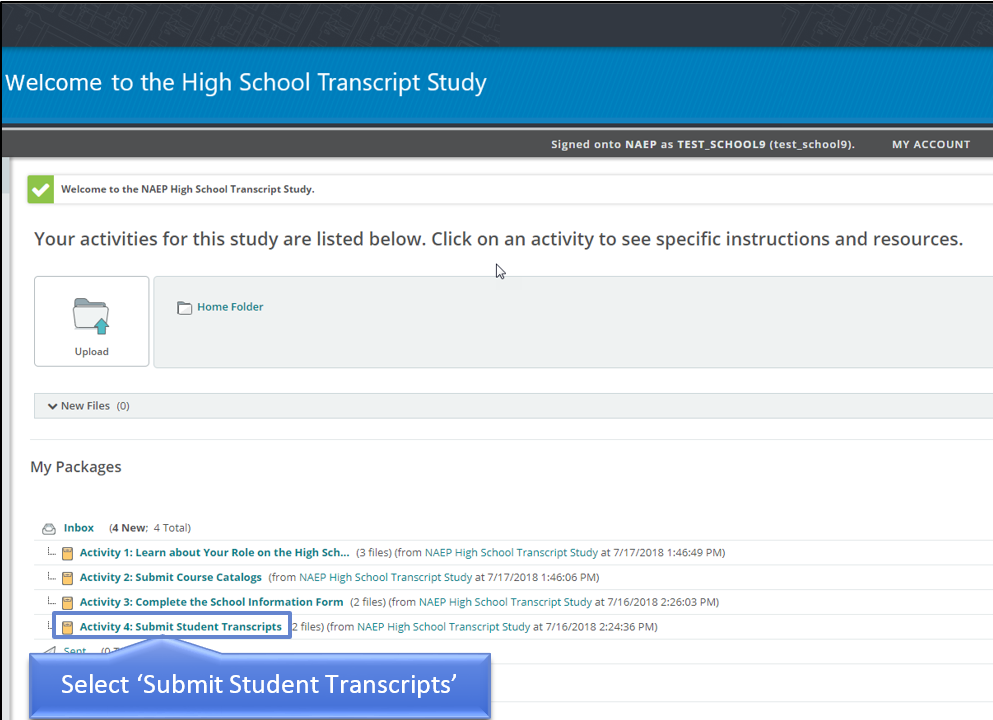
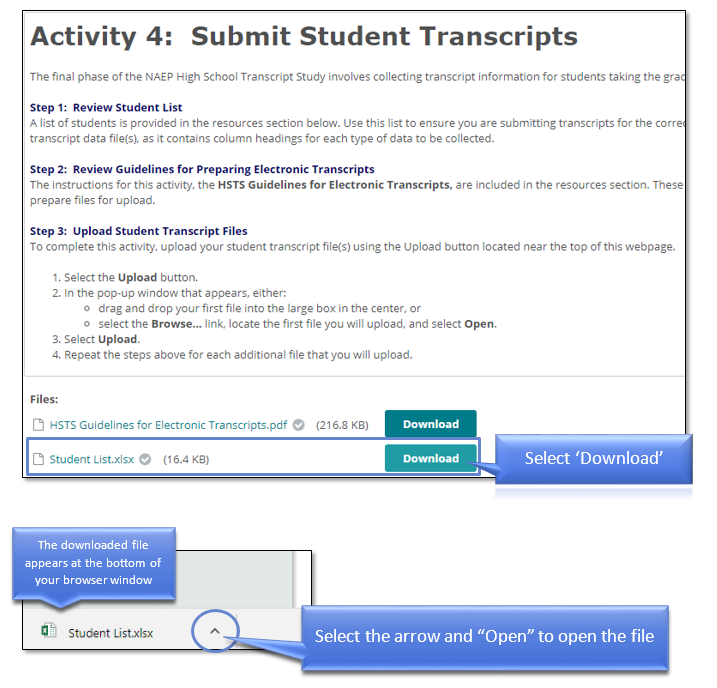
The Student List template will include the following information for each record: NAEP School ID; State School ID; School Name: Grade; E-File Student ID (used for data processing); New Enrollee; State Unique Student ID (if it was included on the E-File); Student First Name; Student Middle Name; and Student Last Name.
The Student List template will also include the HSTS data fields (discussed below).
Step 2: Prepare Your Transcript Records
Use an Accepted File Format
The student transcript records can be provided in various formats. Microsoft Excel or comma separated value (CSV) files are strongly recommended because they provide a clear delineation of the transcript data.
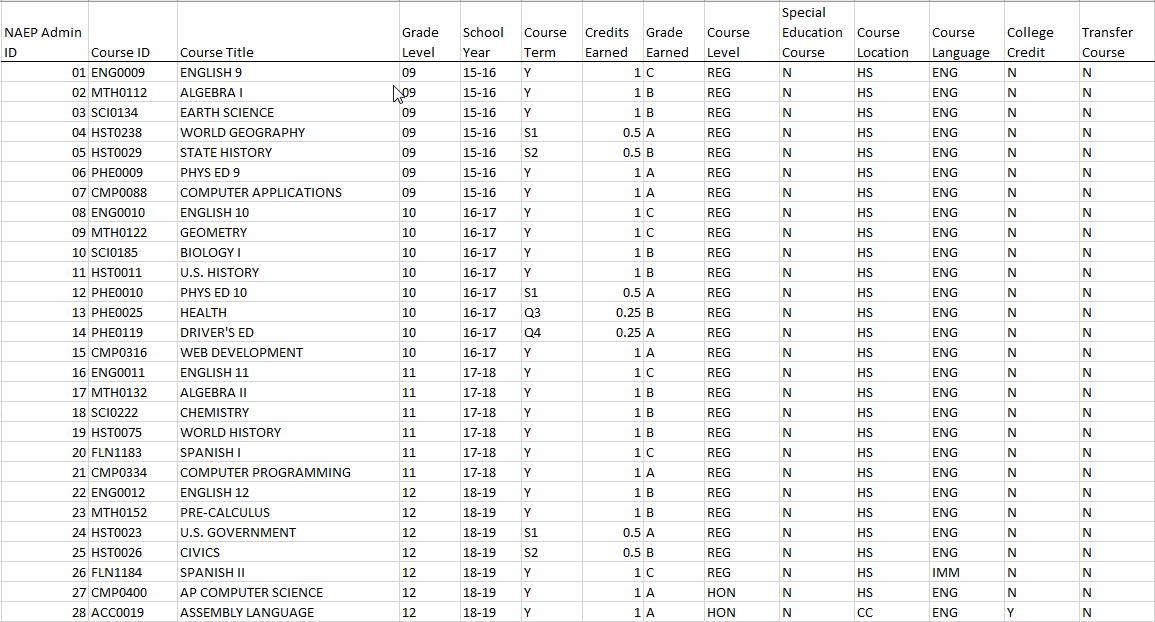
Example of an Excel-based high school transcript file
Other file formats that will be acceptable include:
Microsoft Word files,
Microsoft Access databases,
Extensible Markup Language (XML) files
Formatted text files
Portable Document Format (PDF) files
SPSS files, and
SAS files.
For these file formats, please make it clear where the transcript data fields are located. This may be best written up in a separate document and uploaded with the transcript records.
Include All Required Fields
For each course record, there are two sets of information requested: required and optional data fields. Required data fields include information needed to link, process, and analyze the course records. The optional data fields provide additional data that will aid in the analysis, but may be found in other sources (such as the course catalogs that were provided). Both the required data fields and optional data fields are included as column headers on your Student List template.
Required and Optional Data Fields
Required |
Optional |
NAEP Admin ID |
Course Level |
Course ID |
Special Education Course |
Course Title |
Course Location |
Grade Level |
Course Language |
School Year |
College Credit |
Course Term |
|
Credits Earned |
|
Grade Earned |
|
Transfer Course |
|
The required data fields are as follows:
NAEP Admin ID – The NAEP Admin ID number is an identifier found on the sampled student list. It is very important that this ID number be on the submitted electronic student transcript file. This number allows the student’s transcript to be linked with their NAEP assessment data without the need for any additional student personal information.
Course ID – The course ID number of the course taken. It should be the same course ID number as listed in the course catalog. If the state, TUDA, or school does not have a course ID numbering system, then the field is left blank.
Course Title – The name of the course taken.
Grade Level – The grade level in which the student was enrolled when the course was taken (e.g., 9th, 10th, 11th, and 12th).
School Year – The school year when the course was taken.
Course Term – The length of time the course was taken, relative to the school year. The values for this field can be either general (Year, Trimester, etc.) or specific (Semester 1, Quarter 4, Summer session, etc.). Please provide a key if abbreviations are used (see next section).
Credits Earned – The number of credits earned by the student for the course taken.
Grade Earned – The grade that was earned by the student for the course taken. It can be letter grades (A, B, C, etc.), numeric grades (53, 82, 100, etc.), proficiency levels (Exceed expectations, Meet expectations, etc.), pass/fail (P or F), or other grading codes (incomplete, withdrawn, not applicable, etc.). Please provide a key if abbreviations are used for grading codes that are non-letter or non-numeric.
Transfer Course – A yes-no indicator that marks if the course was taken at a school outside of the state or school district. Use this field to indicate transfer courses of students who moved from outside the state/district into the school after the start of the 2015-2016 school year.
The optional data fields are as follows:
Course Level – An indicator of the rigor of the course taken. We recommend using the levels established by the School Courses for the Exchange of Data (SCED) coding system: basic/remedial, general/regular, enriched/advanced, and honors. Please provide a key if abbreviations are used.
Special Education Course – A yes-no indicator that marks if the course taken counts as a special education course for the student.
Course Location – An indicator of where the student took the course. While most courses are taken at the high school, other possible locations include another high school, a vocational center, community college, or taken as an online course. Please provide a key if abbreviations are used.
Course Language – The primary language in which the course was taught. This field mostly indicates the primary language in which English language learner (ELL) and foreign languages courses are taught. Please provide a key if abbreviations are used.
College Credit – An indicator of whether college credit is earned for the course. The college credit could be earned immediately upon completion of the course, or it may be conditional upon taking other selected courses at specified colleges.
Create a Key
As noted in the field descriptions above, please consider whether any of your data are formatted as abbreviations that may require explanation. This information is best provided in the form of a key. The key may be another worksheet within an Excel workbook or a separate text file.
Example of a Key
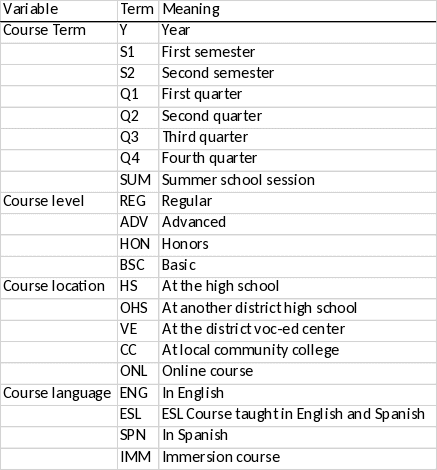
Delete Personal Identifying Information
No personal information, such as students’ names or state-unique student ID numbers, should be on your transcript file when you submit it. If such information is on the file, it will be removed during the data preparation operation for transcript coding.
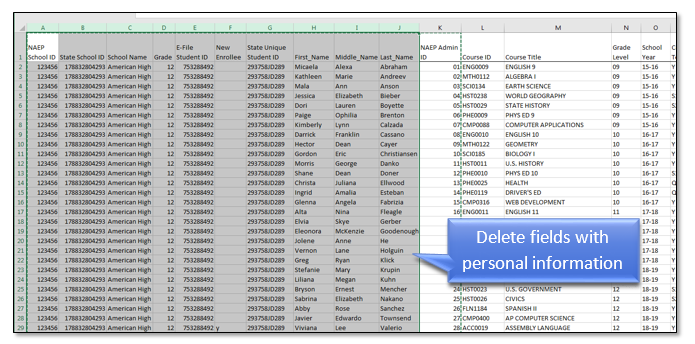
Step 3: Upload Your Transcript Records
When you have finished preparing your transcript records, please upload your file(s) to the HSTS website.
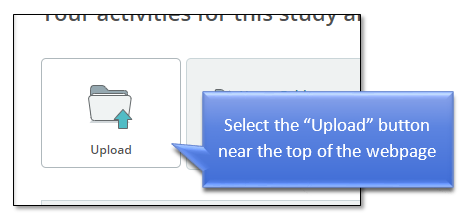
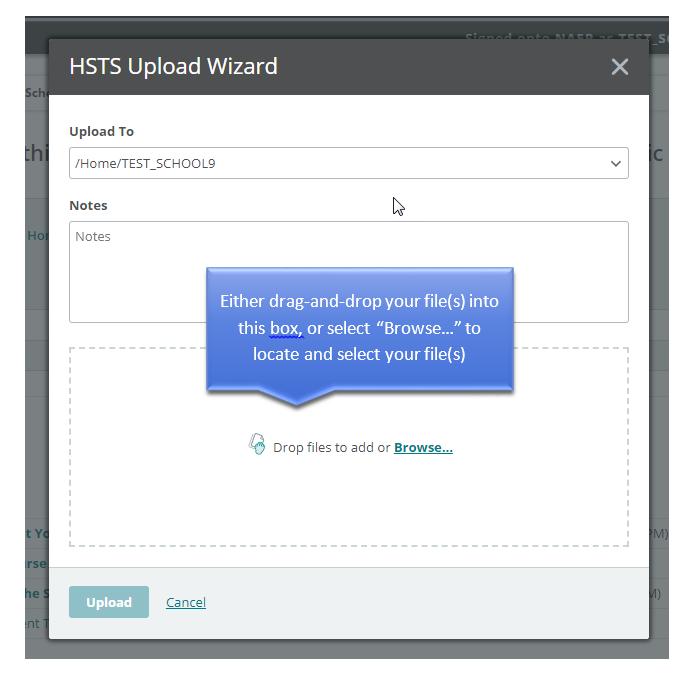
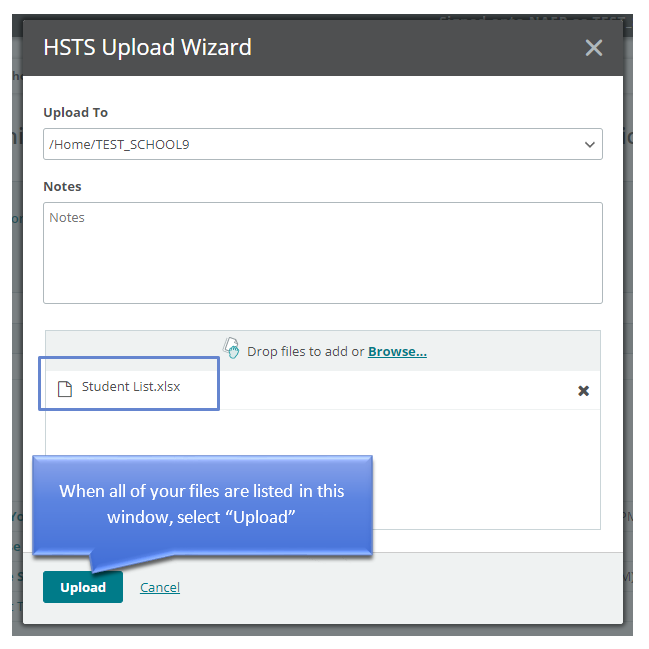
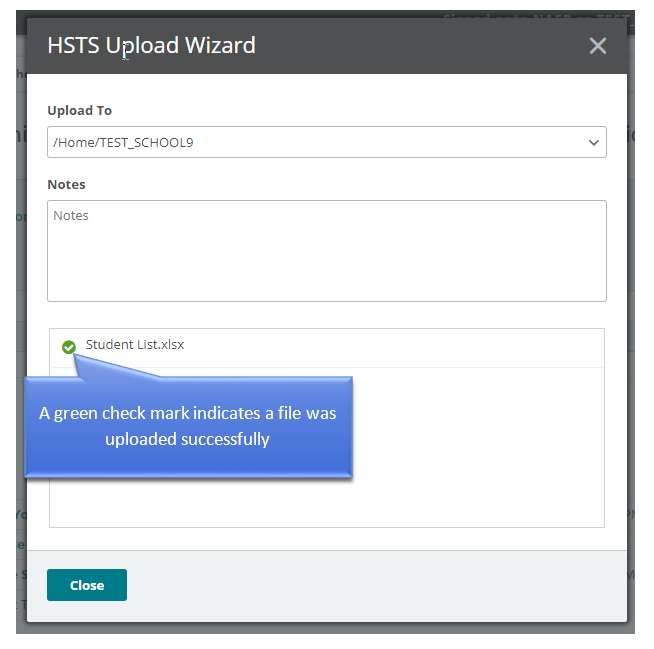
Upon receiving the transcripts, the NAEP Admin ID number listed on the file will be used to link the student transcript records to the 2019 NAEP grade 12 assessments’ student records. Once the link is established, any school name or student personal information found on the transcript files will be removed.
Document layout
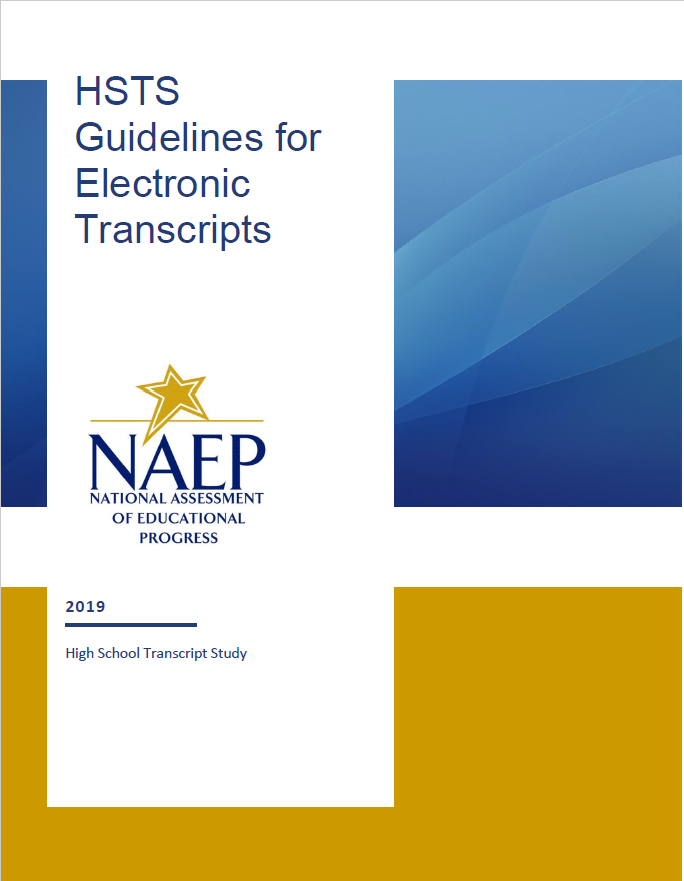
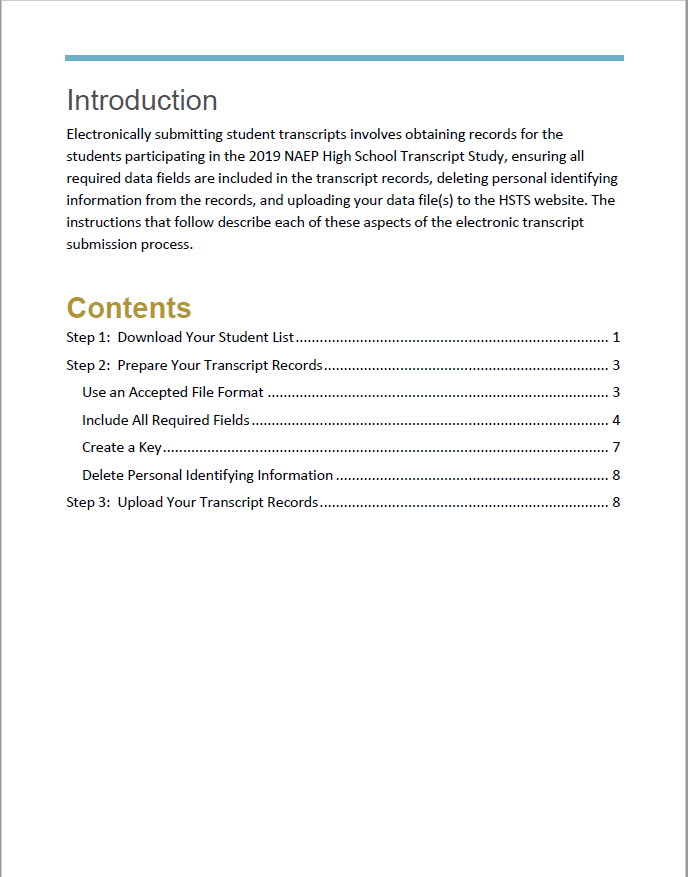
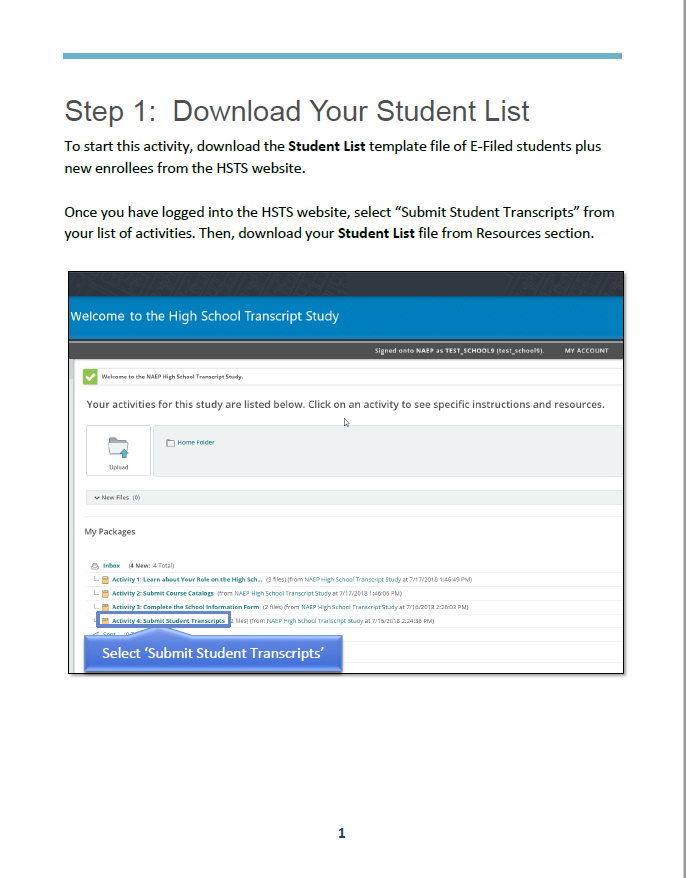
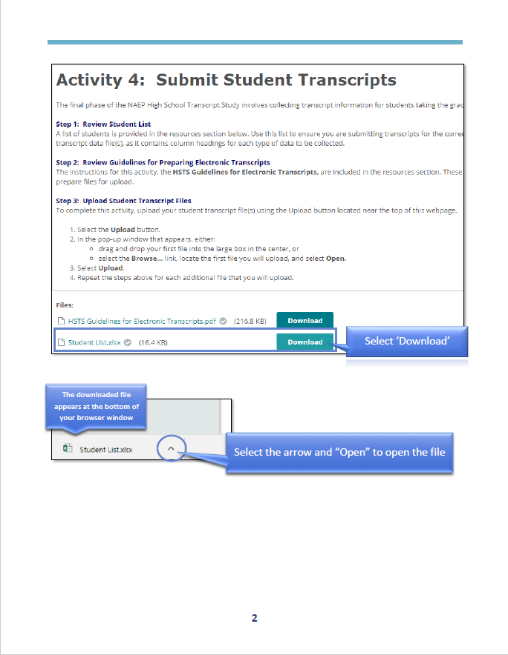
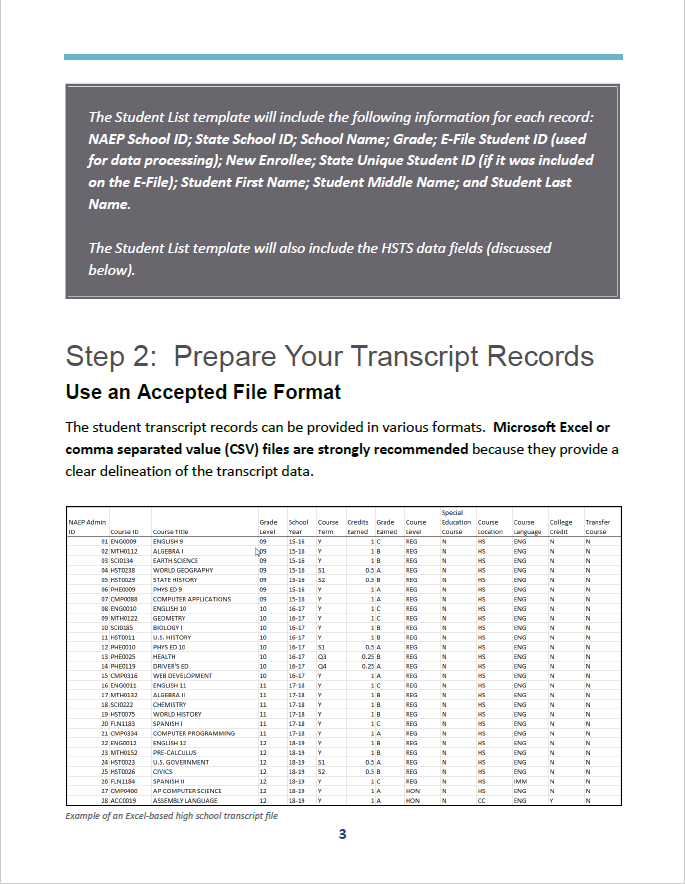
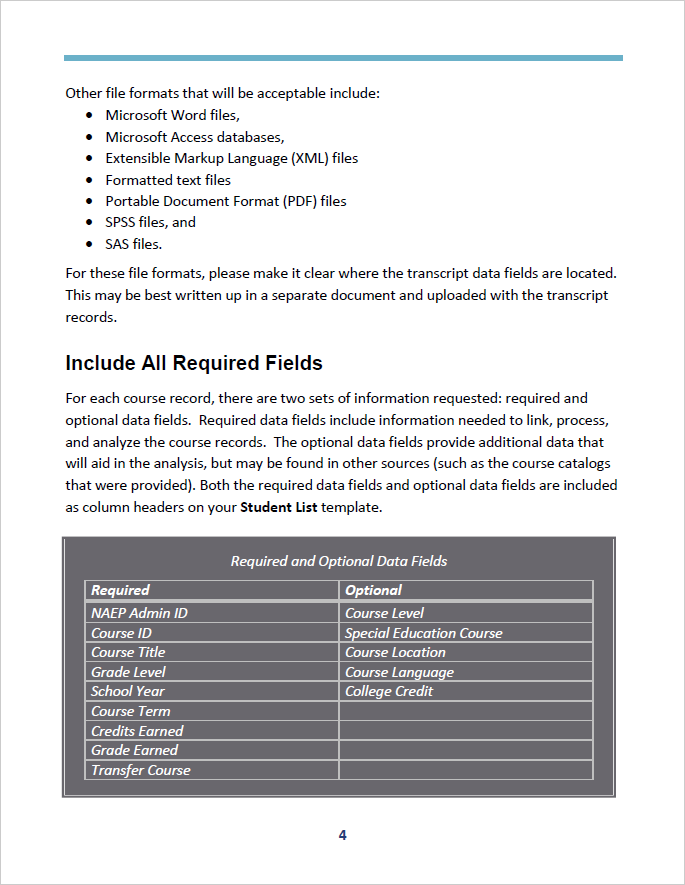
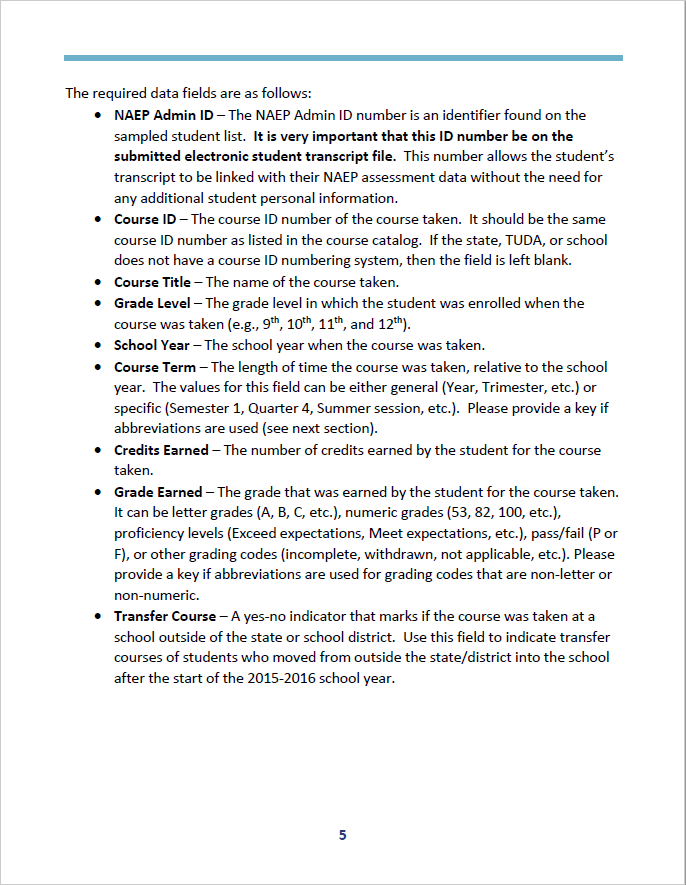
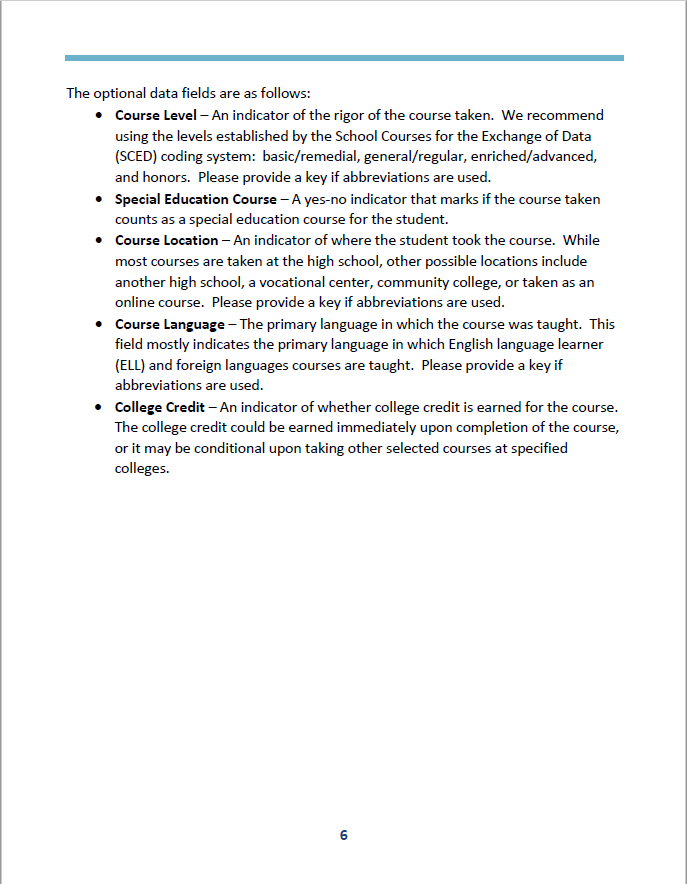
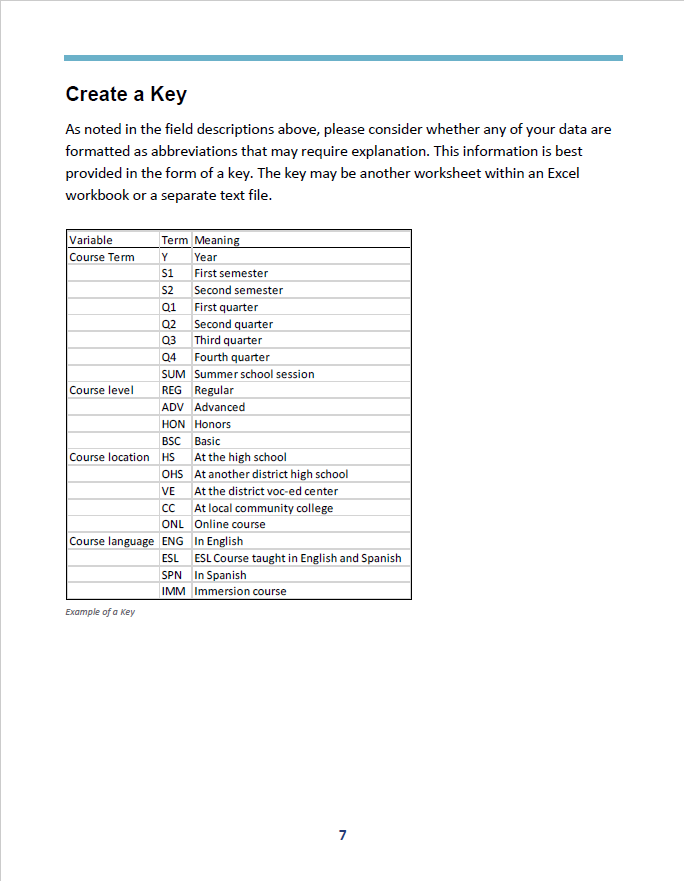

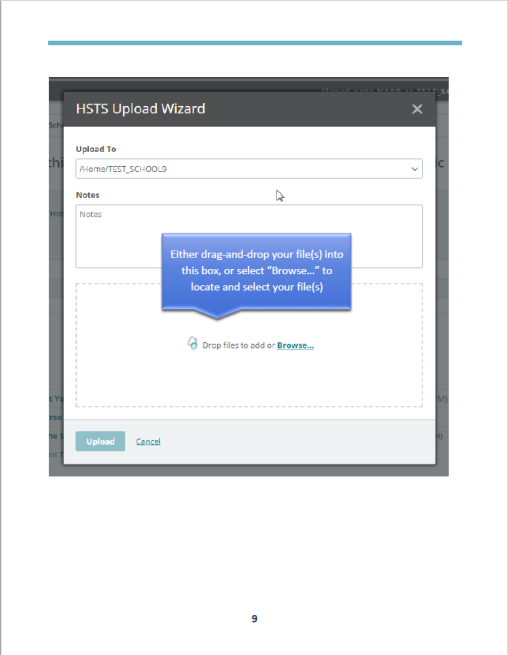
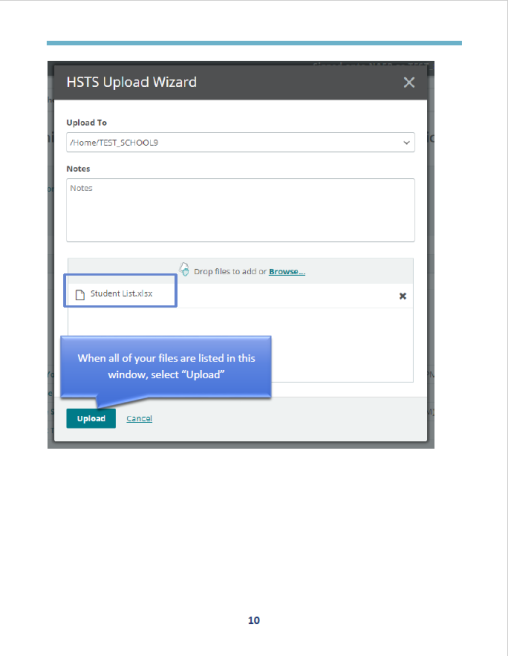
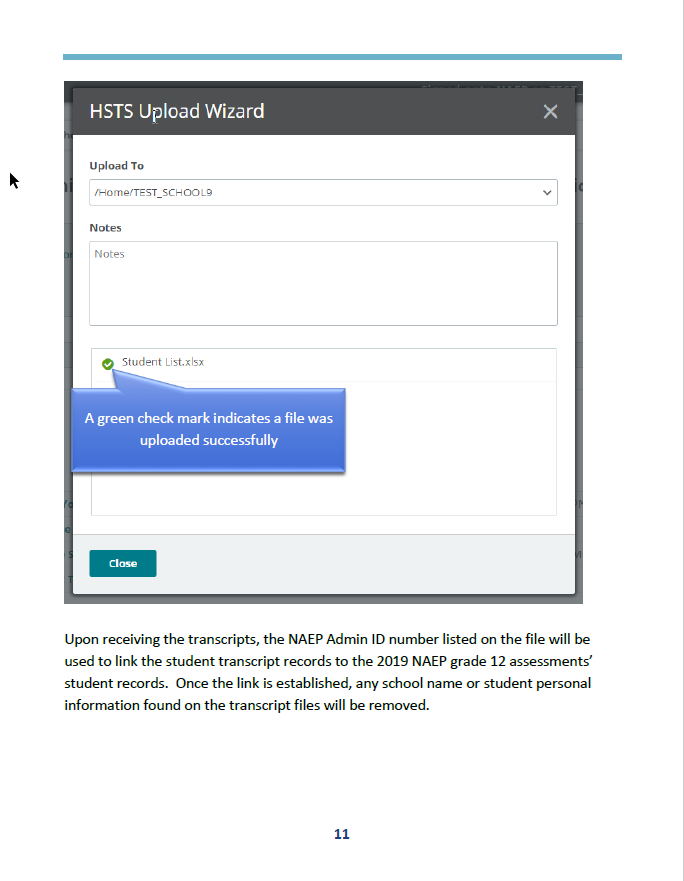
Review Parent Information Letter
HSTS FERPA Disclosure Record Annotation Text
(See HSTS FERPA Disclosure Record Annotation Text section earlier in this document)
HSTS Parent Information Letter
January-March 2019
Dear Parent:
The National Center for Education Statistics of the U.S. Department of Education has authorized the National Assessment of Educational Progress (NAEP) to obtain student transcript data from schools selected to participate in the 2019 NAEP assessments. The NAEP High School Transcript Study (HSTS) will be conducted during the summer after the selected students have graduated from high school. The HSTS provides information about the courses high school graduates took during their high school years, how many credits they earned, the grades they received, and the relationship of these coursetaking patterns to achievement on twelfth-grade NAEP.
Your child’s school has been selected to participate in this important study. In the summer of 2019, NAEP will collect transcripts for a sample of students who were in the twelfth grade in the 2018–2019 school year. No student time is involved in the study.
NCES is authorized to conduct NAEP by the National Assessment of Educational Progress Authorization Act (20 U.S.C. §9622). Educational agencies and institutions are permitted to disclose personally identifiable information from students' education records to NCES by the Family Educational Rights and Privacy Act (FERPA, 34 CFR §§ 99.31(a)(3)(iii) and 99.35) for the purpose of evaluating federal supported education programs.
The NAEP 2019 High School Transcript Study is an important study that provides valuable information regarding the courses students take while in high school and the rigor of U.S. high schools. The participation of your child’s school is needed to make the results of this study comprehensive, accurate, and timely.
Sincerely,
Peggy G. Carr
Associate Commissioner
All of the information provided by study participants may be used only for statistical purposes and may not be disclosed, or used, in identifiable form for any other purpose except as required by law (20 U.S.C. §9573 and 6 U.S.C. §151). By law, every NCES employee as well as every NCES agent, such as contractors and NAEP coordinators, has taken an oath and is subject to a jail term of up to 5 years, a fine of $250,000, or both if he or she willfully discloses ANY identifiable information about students. Electronic submission of each student’s information will be monitored for viruses, malware, and other threats by Federal employees and contractors in accordance with the Cybersecurity Enhancement Act of 2015. The collected information will be combined across respondents to produce statistical reports.
Review Parent Consent Letter
HSTS FERPA Disclosure Record Annotation Text
(See HSTS FERPA Disclosure Record Annotation Text section earlier in this document)
HSTS Parent Information Letter
(See HSTS Parent Information Letter on the previous page of this document)
HSTS Parent Consent Letter
January-March 2019
Dear Parent:
The National Center for Education Statistics of the U.S. Department of Education has authorized the National Assessment of Educational Progress (NAEP) to obtain student transcript data from schools selected to participate in the 2019 NAEP assessments. The NAEP High School Transcript Study (HSTS) will be conducted during the summer after the selected students have graduated from high school. The HSTS provides information about the courses high school graduates took during their high school years, how many credits they earned, the grades they received, and the relationship of these coursetaking patterns to achievement on twelfth-grade NAEP.
Your child’s school has been selected to participate in this important study. In the summer of 2019, NAEP will collect transcripts for a sample of students who were in the twelfth grade in the 2018–2019 school year. Your child is one of the students for whom we may request transcript data. Please understand that no student time is involved in the study.
NCES is authorized to conduct NAEP by the National Assessment of Educational Progress Authorization Act (20 U.S.C. §9622). Educational agencies and institutions are permitted to disclose personally identifiable information from students' education records to NCES by the Family Educational Rights and Privacy Act (FERPA, 34 CFR §§ 99.31(a)(3)(iii) and 99.35) for the purpose of evaluating federal supported education programs.
Before we proceed, we want to make sure that you do not have any objections releasing your child’s transcript information for these studies. If you object, please complete and return the attached form to the school.
The NAEP 2019 High School Transcript Study is an important study that provides valuable information regarding the courses high school students take and the rigor of U.S. high schools. I would appreciate your cooperation in this very important educational study. Thank you for your time and consideration.
Sincerely,
Peggy G. Carr
Associate Commissioner
---------------------------------------------------------------------------------------------------------------------
IF YOU DO NOT OBJECT TO THE RELEASE OF YOUR CHILD’S TRANSCRIPT, IT IS NOT NECESSARY TO RETURN THIS FORM TO THE SCHOOL.
I have been informed of the nature of the 2019 High School Transcript Study and object to the release of information from my child’s transcript.
Print Child’s Name: ______________________________________________________________
Last First Middle
______________________________________________________________________________
Parent or Guardian’s signature
All of the information provided by study participants may be used only for statistical purposes and may not be disclosed, or used, in identifiable form for any other purpose except as required by law (20 U.S.C. §9573 and 6 U.S.C. §151). By law, every NCES employee as well as every NCES agent, such as contractors and NAEP coordinators, has taken an oath and is subject to a jail term of up to 5 years, a fine of $250,000, or both if he or she willfully discloses ANY identifiable information about students. Electronic submission of each student’s information will be monitored for viruses, malware, and other threats by Federal employees and contractors in accordance with the Cybersecurity Enhancement Act of 2015. The collected information will be combined across respondents to produce statistical reports.
| File Type | application/vnd.openxmlformats-officedocument.wordprocessingml.document |
| File Modified | 0000-00-00 |
| File Created | 0000-00-00 |
© 2025 OMB.report | Privacy Policy